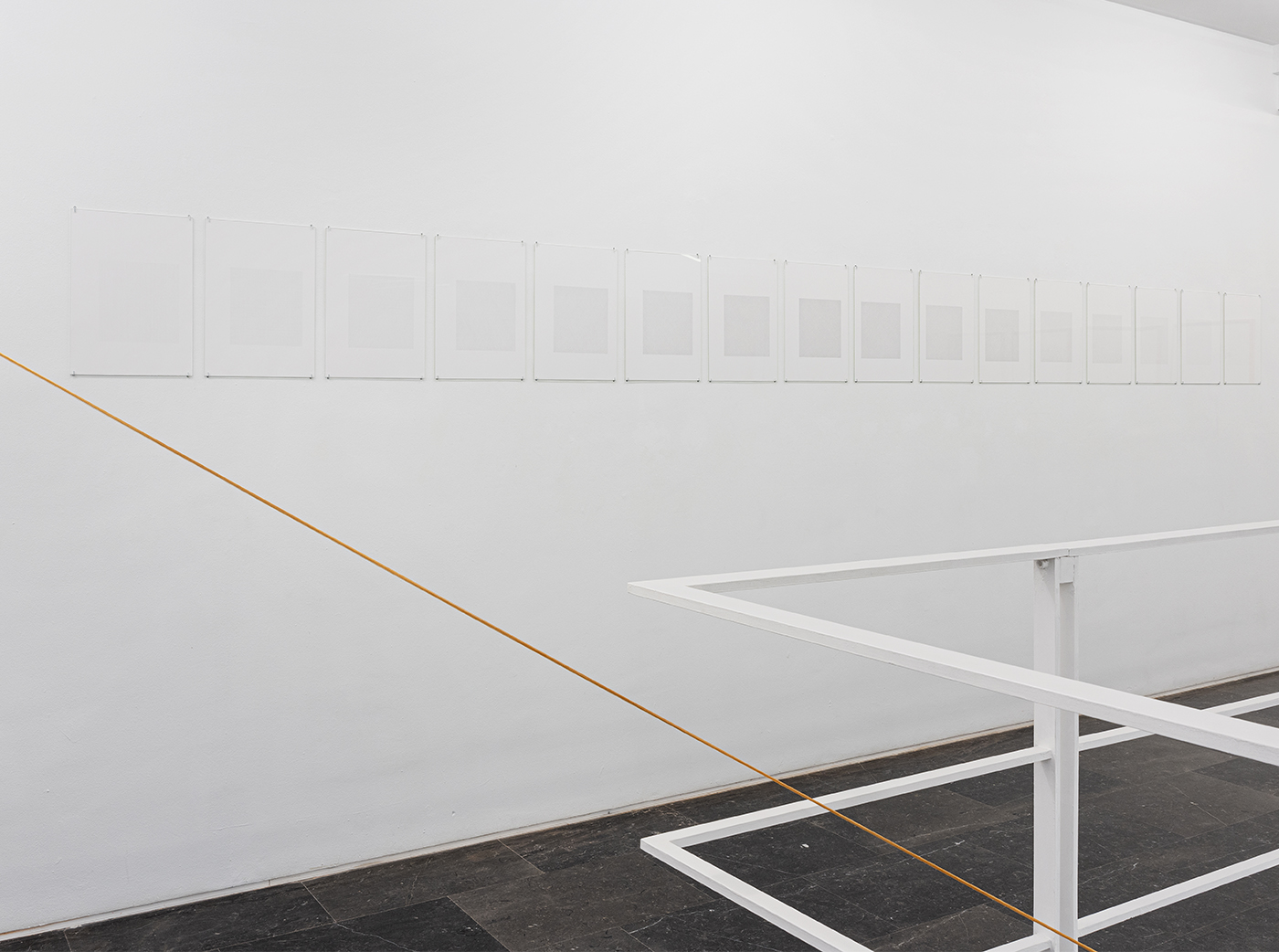chocolate fresa vainilla
Curated by Camila Oliveira Fairclough
Armando Andrade Tudela, Allison Blumenthal, Emmanuelle Castellan, Claude Closky, Anne Colomes, Oriane Déchery, Anais Defago, Olivier Filippi, Daniel Graham Loxton, Robbin Heyker, David Hominal, Jan Kiefer, Colombe Marcasiano, Jean François Maurige, Ana Mazzei, Rasmus Nilausen, Camila Oliveira Fairclough, Marielle Paul, Hugo Pernet, Simon Rayssac, Anne Laure Sacriste, Alain Séchas, Hank Schmidt in der Beek, Sarah Tritz, Emmanuel Van der Meulen, Elsa Werth, Concha Ybarra.

Armando Andrade Tudela. Burladorxs, 2020 - 2022. Stainless steel, hay, chair. 90 x 50 x 50 cm. / Robbin Heyker. Hair cut 3, 2014. Acrylic on canvas. 150 x 120 cm. / Robbin Heyker. RWH Whith 9 Dots, 2013. Oil on canvas. 67 x 53 cm.

Chocolate fresa vainilla, 2022. Room 1. General view.
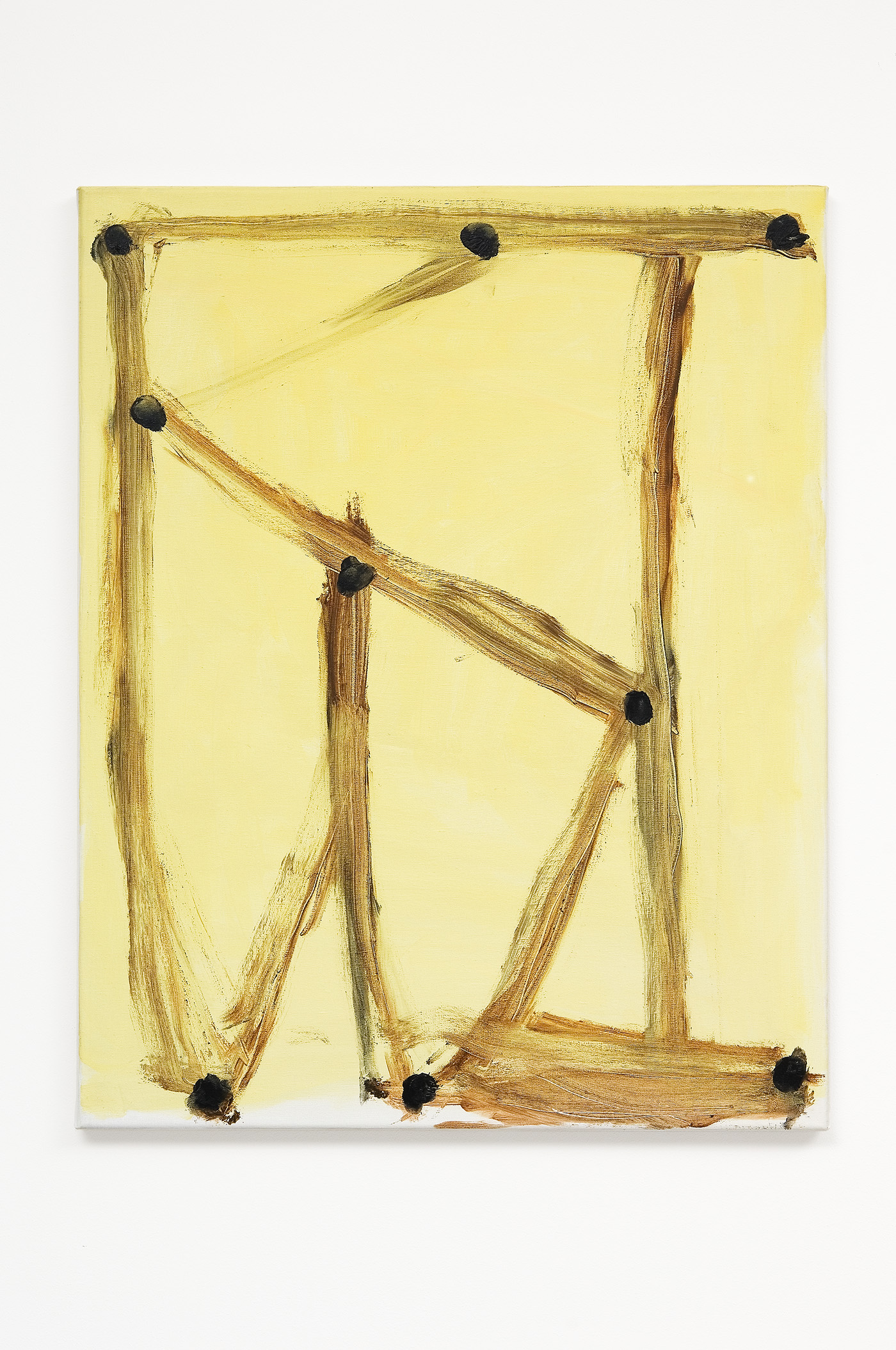
Robbin Heyker. RWH With 9 Dots, 2013. Oil on canvas. 67 x 53 cm.

Oriane Déchery. Marron Volant, 2021. Medium-hard polyurethane foam, liquid rubber sealant, wooden board, motor, magnets. 70 x 50 cm.
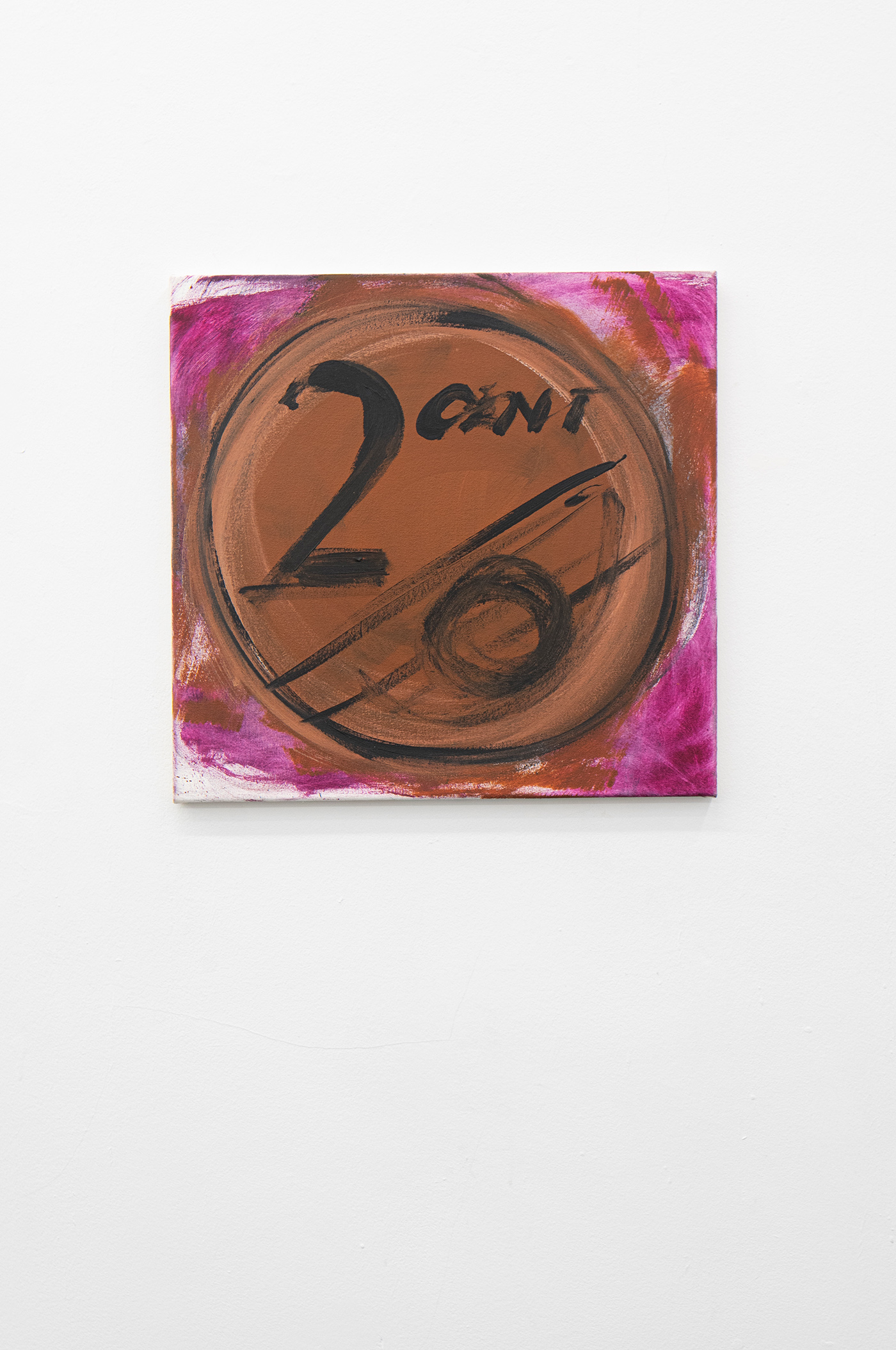
David Hominal. Sans titre 3, 2011. Oil on canvas. 50 x 50 cm.
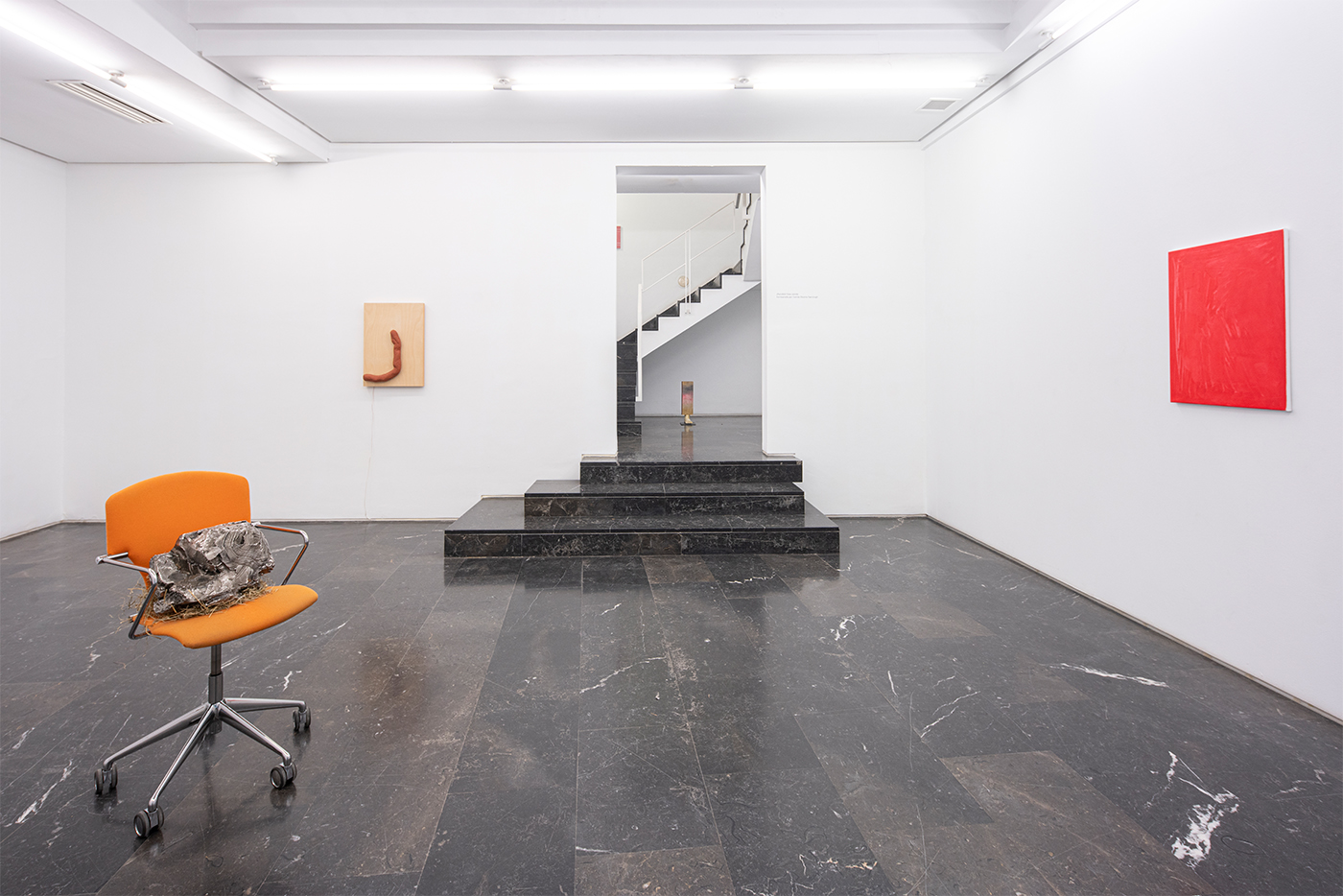
Chocolate fresa vainilla, 2022. Room 1. General view.
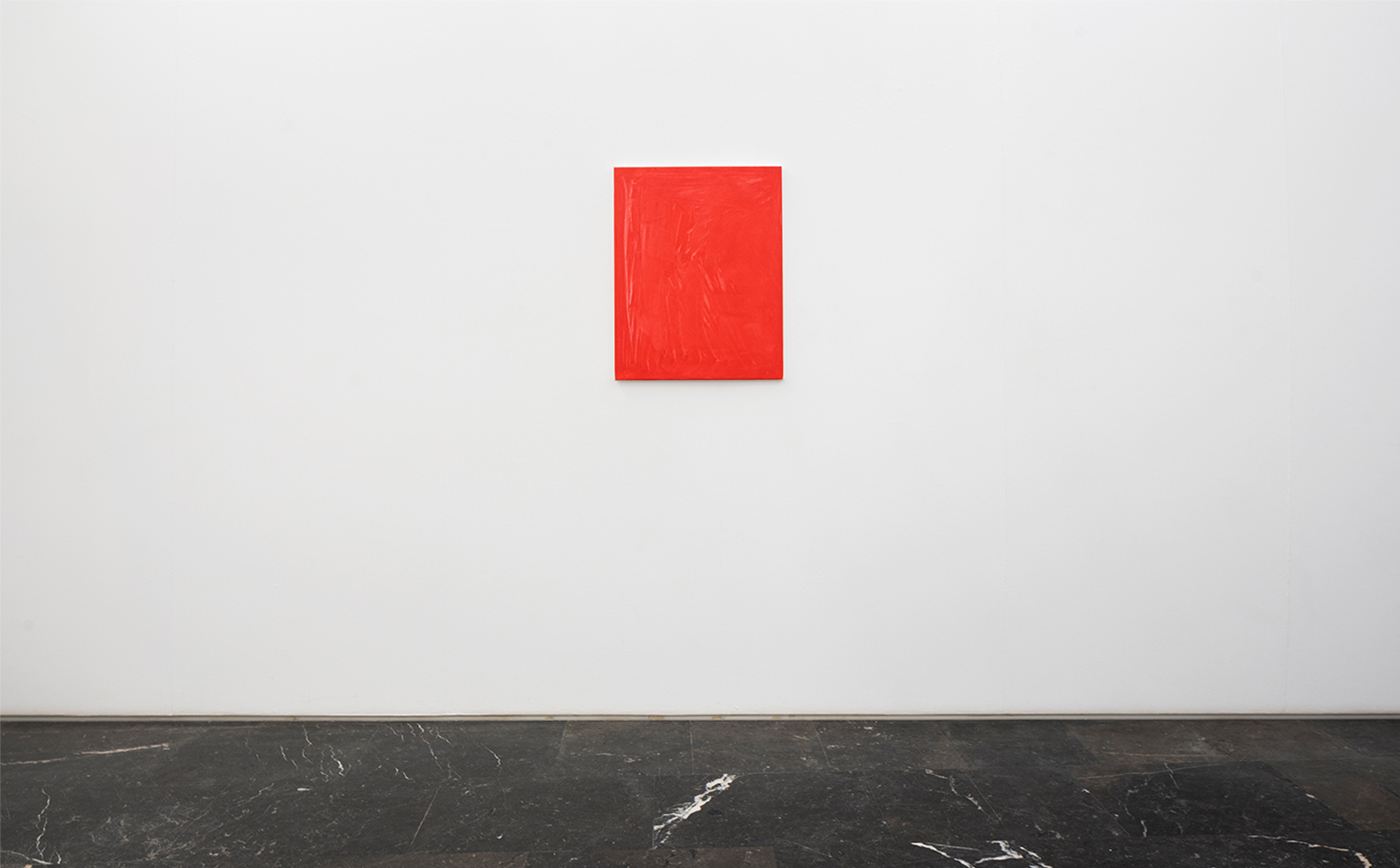
Robbin Heyker. Untitled (R), 2015. Oil on canvas. 70 x 55 cm.
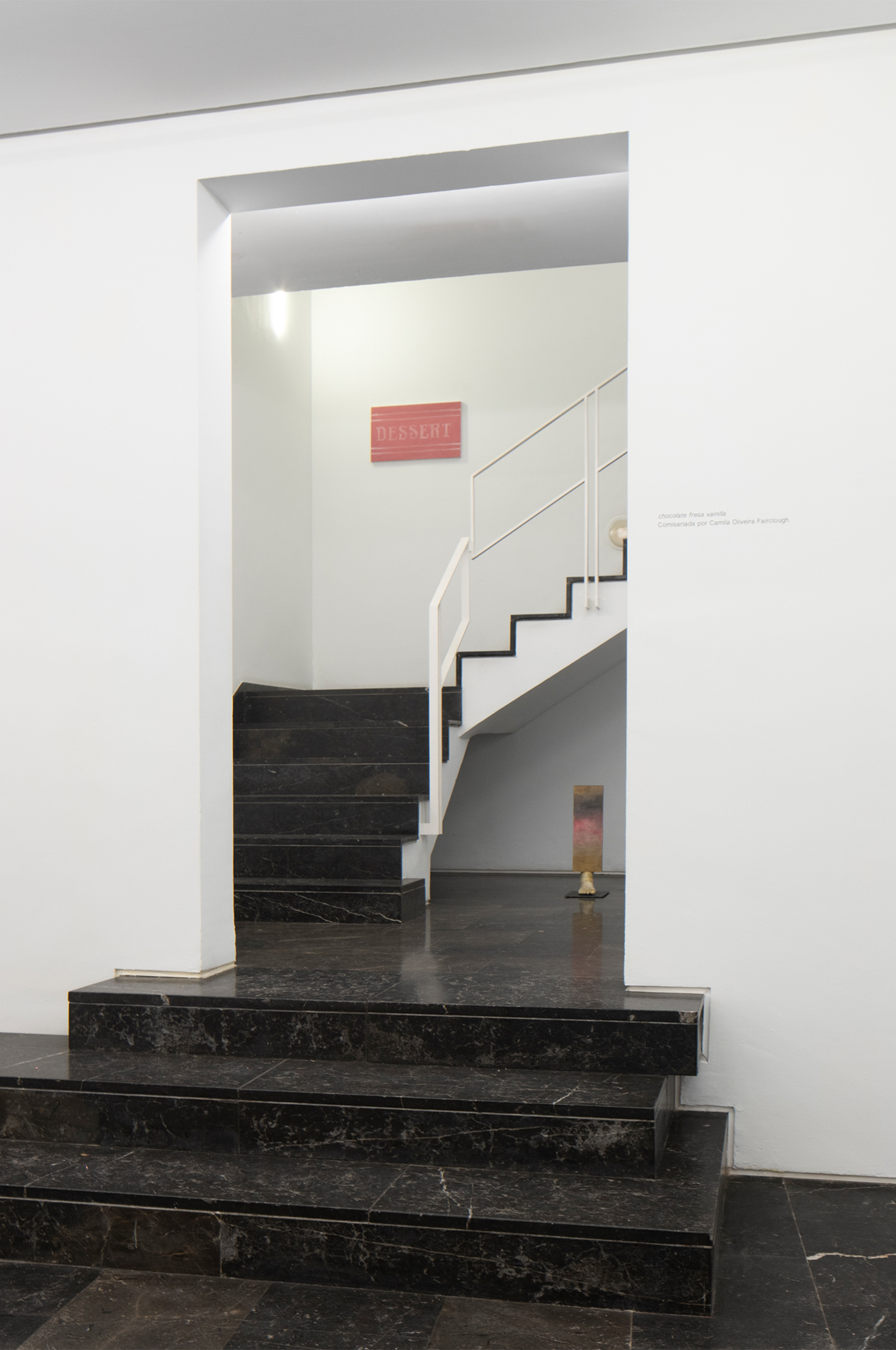
Ana Mazzei. Pezinho, 2020. Mannequin foot impregnating varnish and paint with wax on garapeira wood. 33 x 55 cm. / Camila Oliveira Fairclough. Dessert, 2021. Acrylic on canvas. 53,5 x 21 x 17 cm.
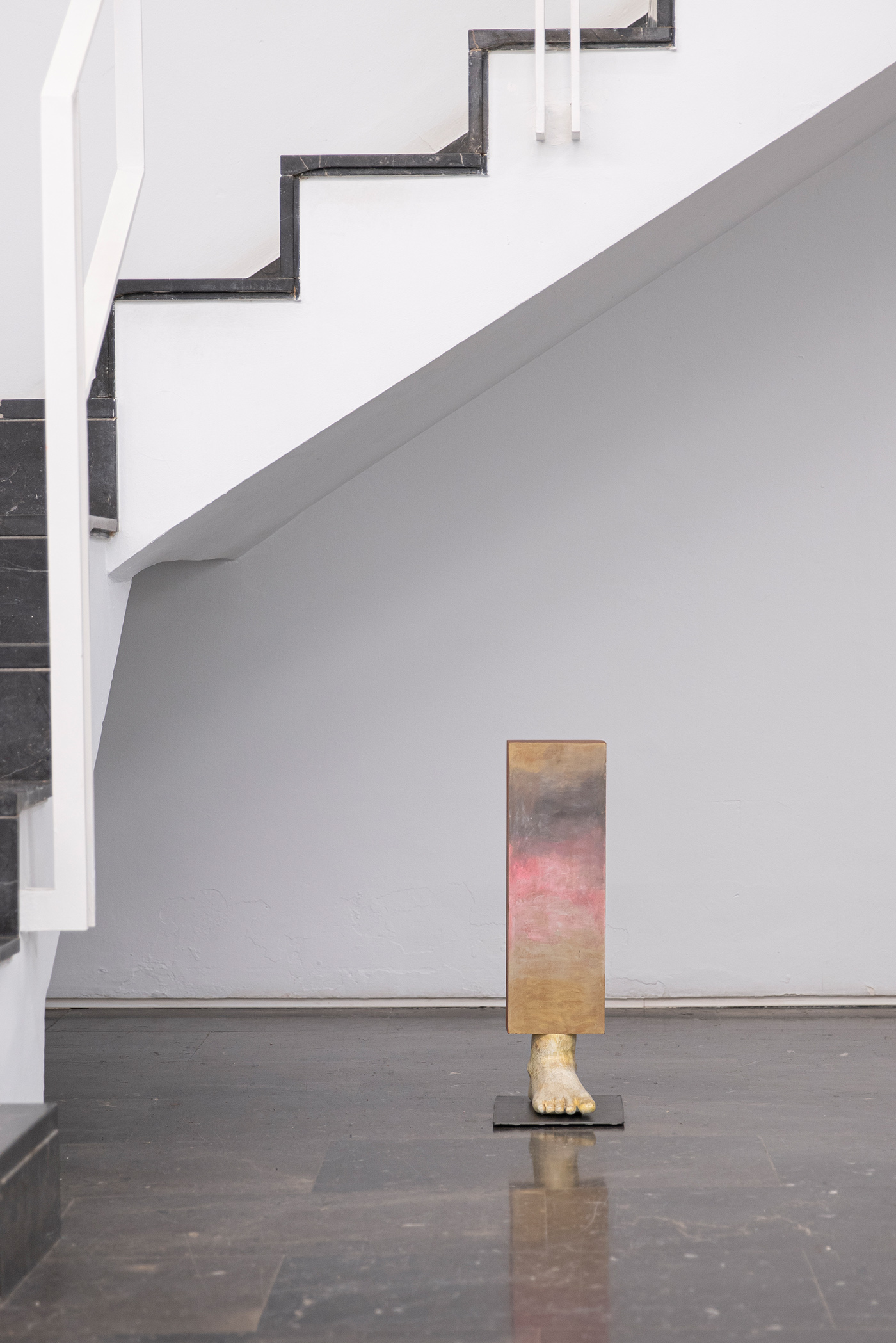
Ana Mazzei. Pezinho, 2020. Mannequin foot impregnating varnish and paint with wax on garapeira wood. 53,5 x 21 x 17 cm.

Chocolate fresa vainilla, 2022. Room 2. General view.

Jean Françoise Maurige. Untitled II, 2013. Oil and acrylic on canvas. 115 x 105 cm.
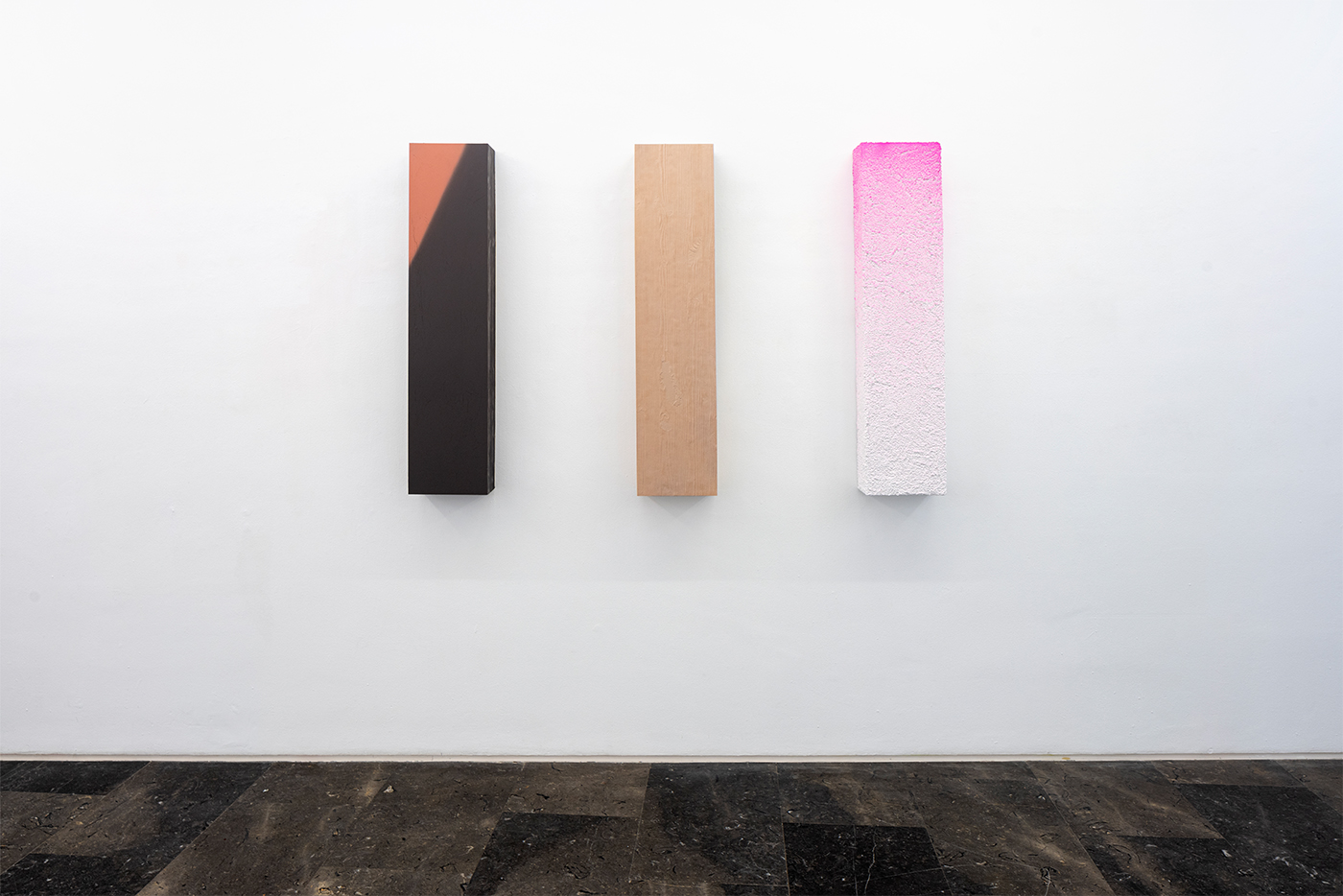
Anaïs Defago. Corner light, 2022. Fiberglass, resin, acrylic paint. 110 x 25 x 12 cm. / Shadow diagonal, 2022. Fiberglass, resin, acrylic paint. 110 x 25 x 12 cm. / Flirt, 2022. Fiberglass, resin, acrylic paint. 110 x 25 x 12 cm.
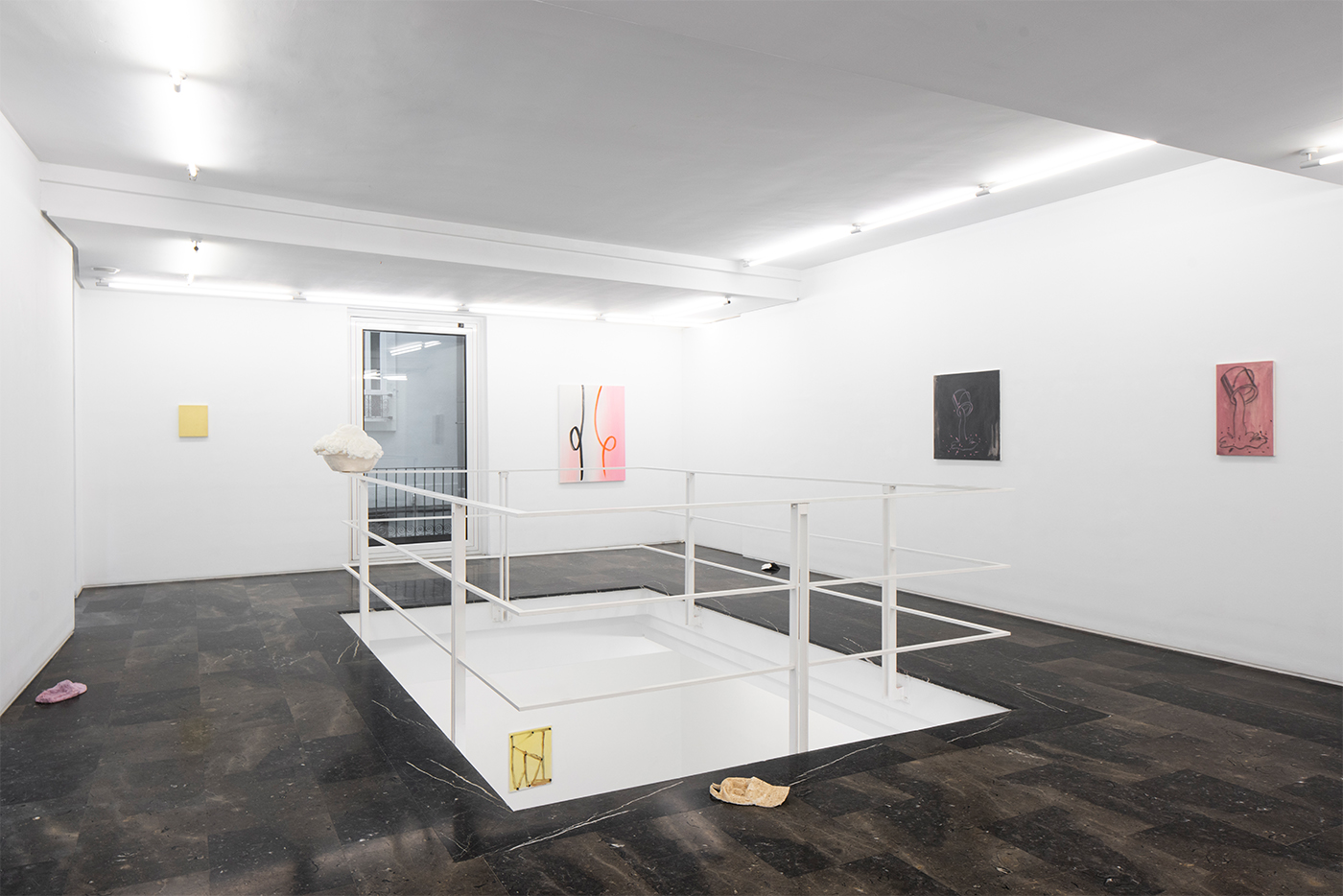
Chocolate fresa vainilla, 2022. Room 2. General view.
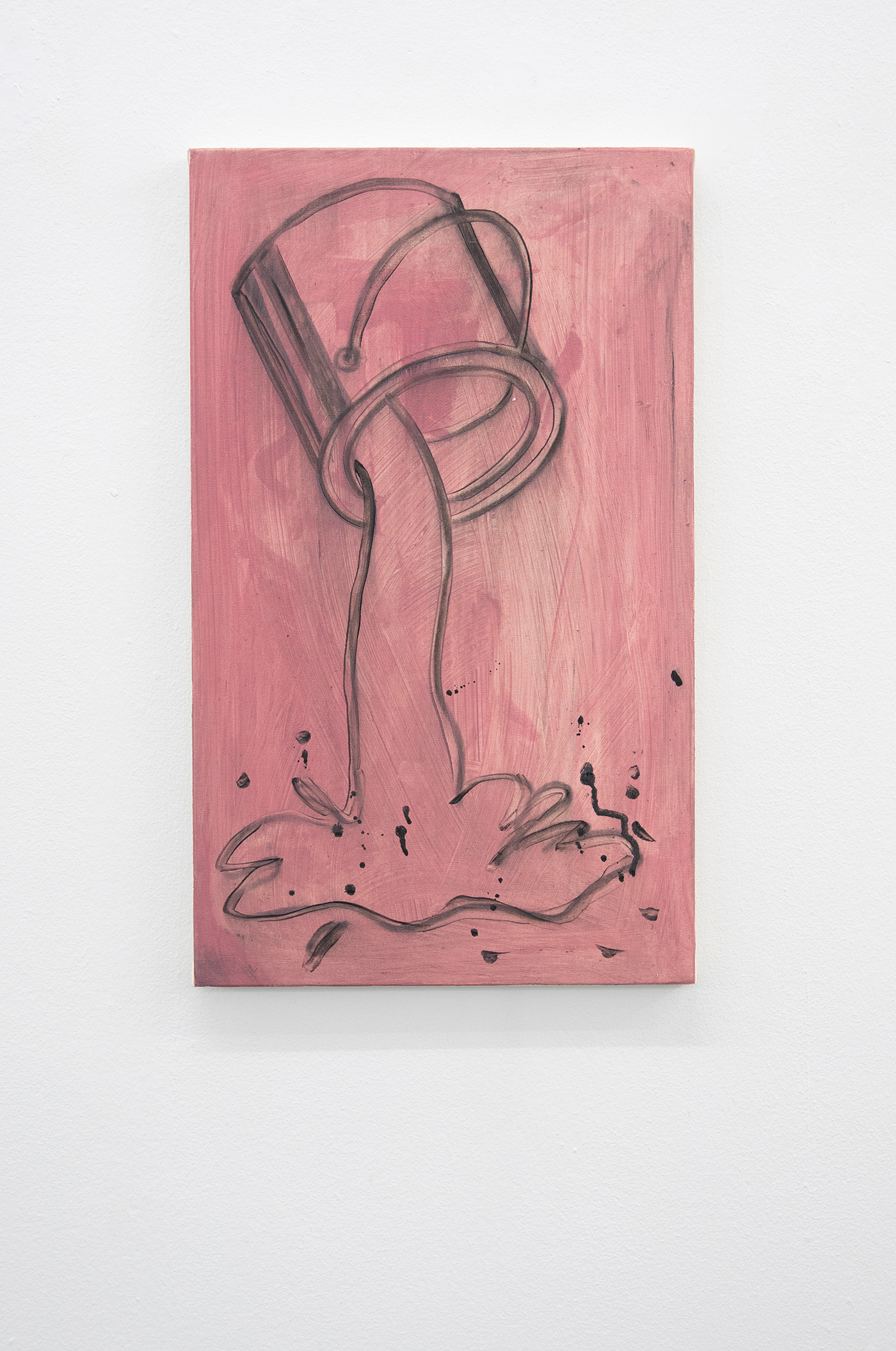
Camila Oliveira Fairclough. Pink drool, 2021. Acrylic on canvas. 55 x 38 cm.
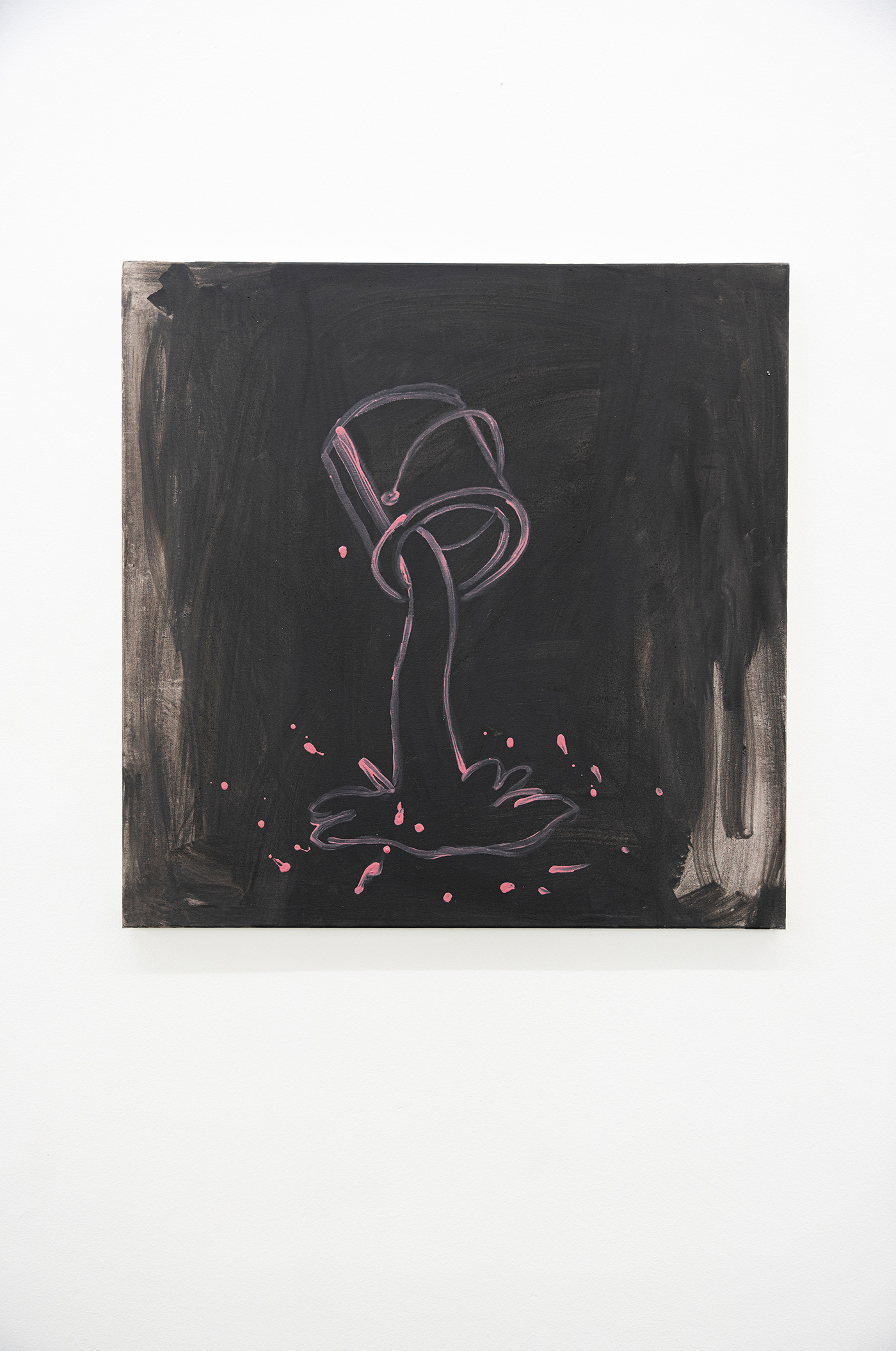
Camila Oliveira Fairclough. Black drool, 2021. Acrylic on canvas. 70 x 70 cm.
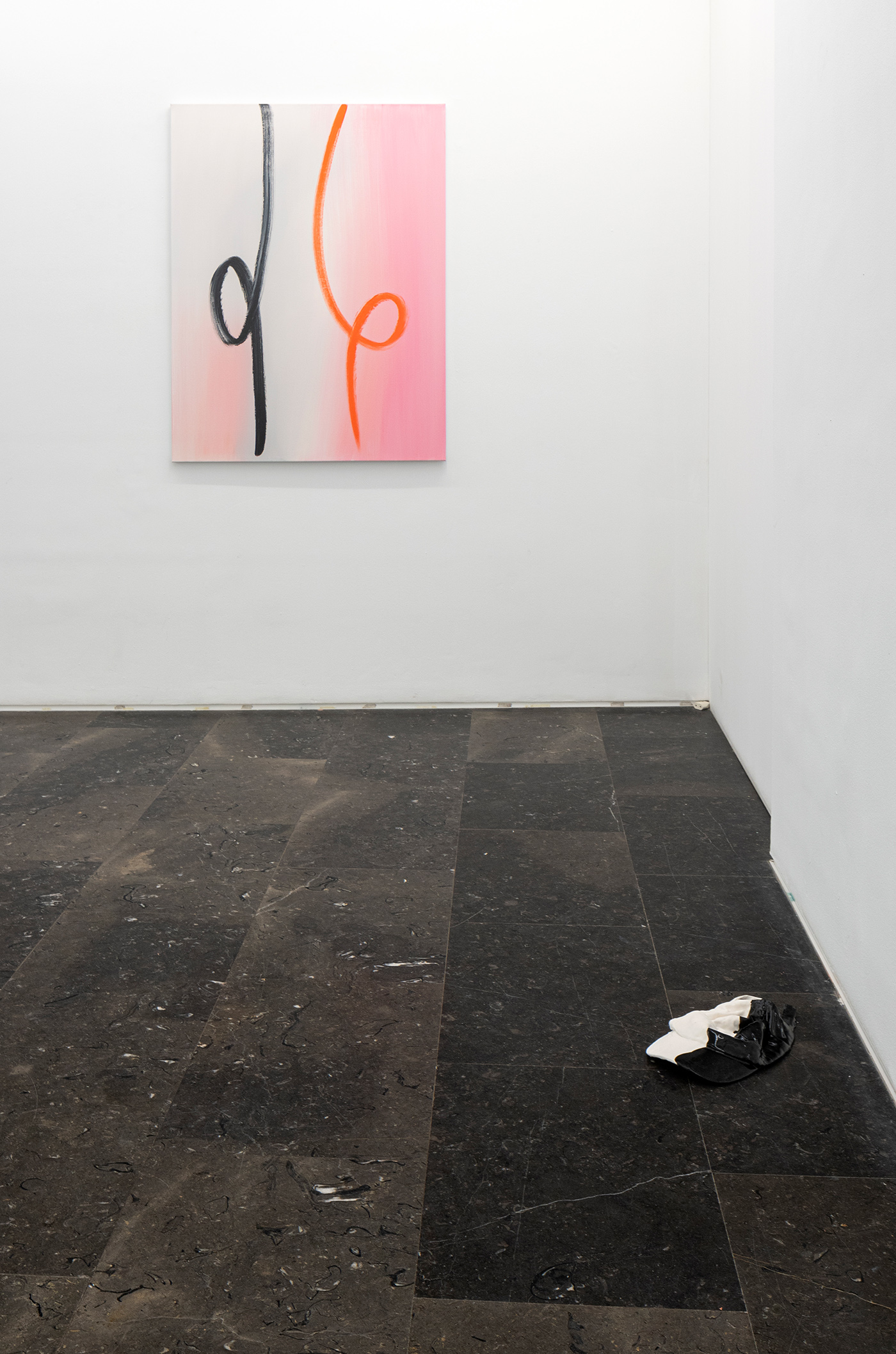
Alain Sechas. Untitled 24, 2011. Oil on canvas. 116 x 89 cm. / Colombe Marcasiano. Cap (Halfandhalf), 2020. Cap, plaster, tar. 20 x 33 x 9 cm.
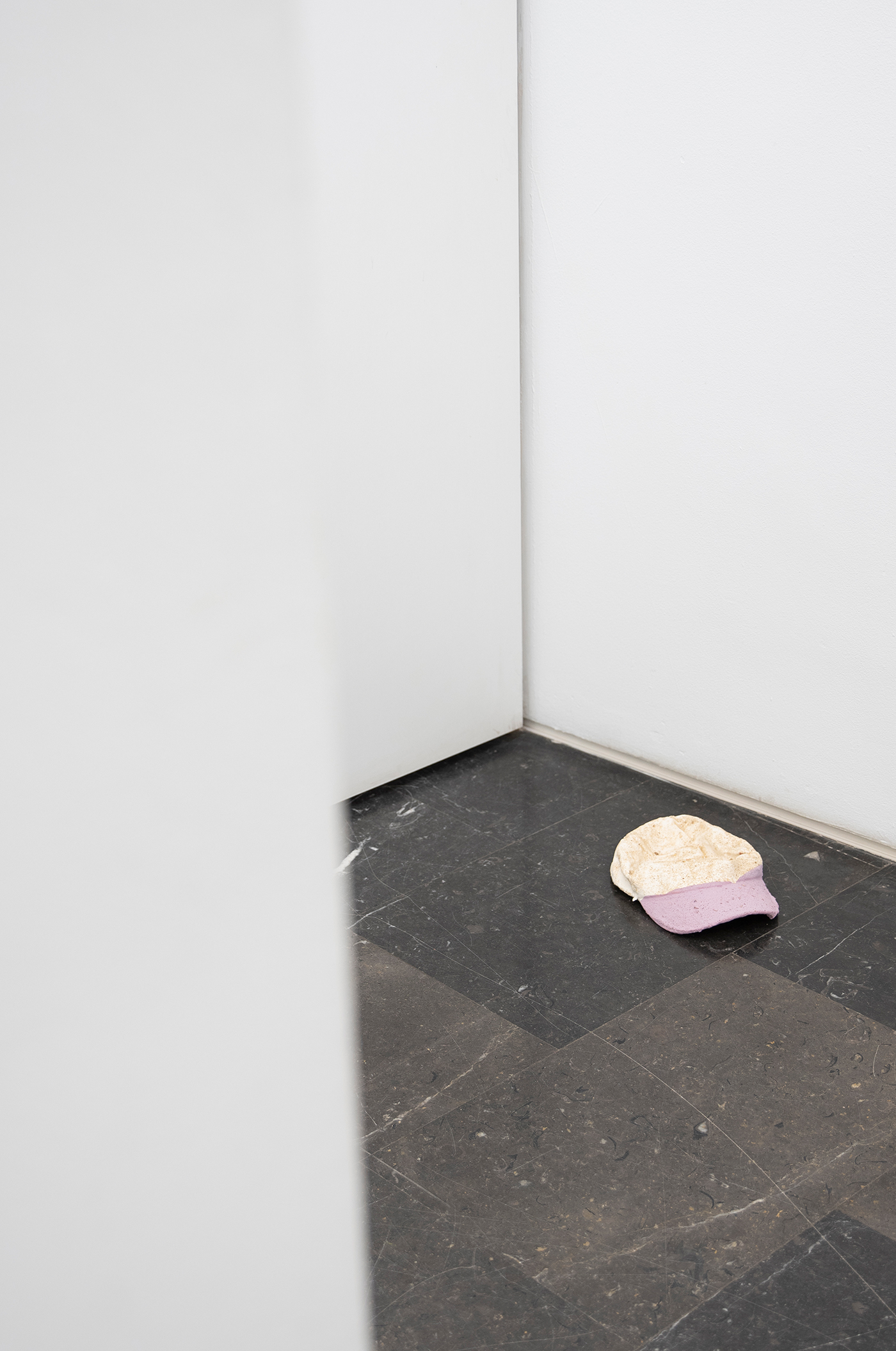
Colombe Marcasiano. Cap (Sandy), 2019. Cap, colored plaster, sand. 20 x 33 x 9 cm.
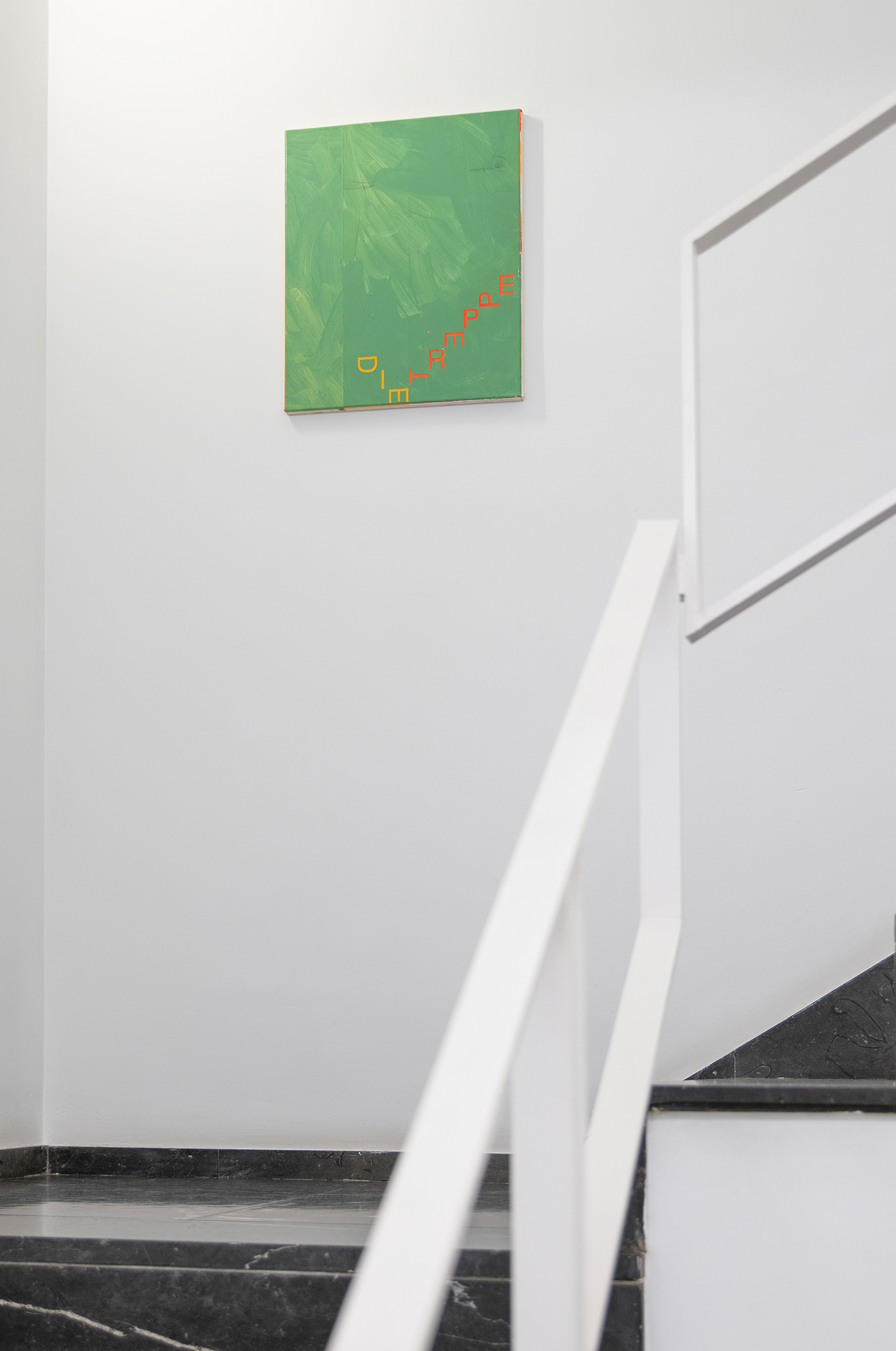
Jan Kiefer. Die Treppe (green, orange, red), 2021. Acrylic, acrilyc binder, acrilyc medium, archival paper on primed cotton. 50 x 40 cm.
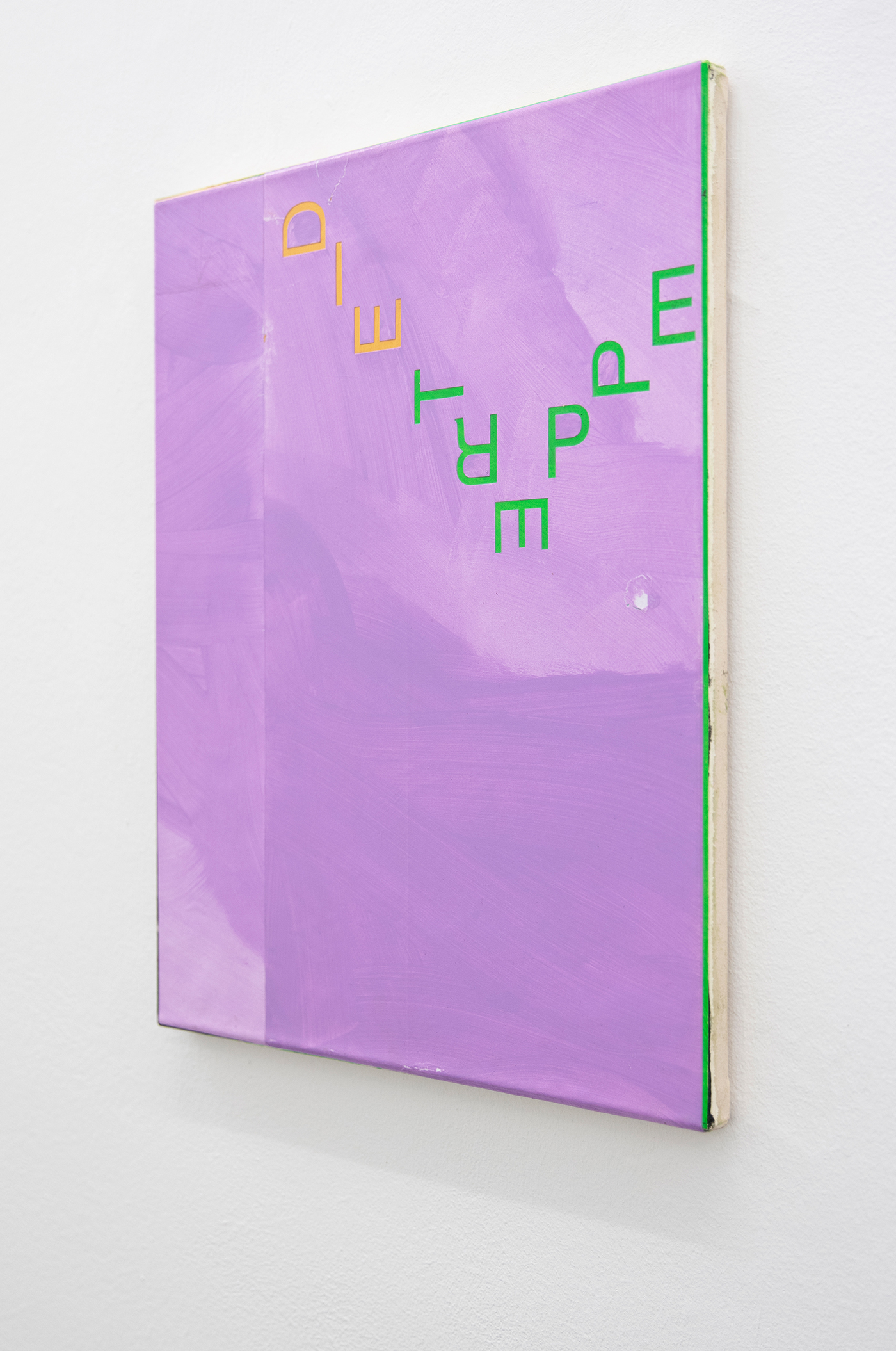
Jan Kiefer. Die Treppe (lightpurple, gold, green), 2021. Acrylic, acrilyc binder, acrilyc medium, archival paper on primed cotton. 50 x 40 cm.

Elsa Werth. Eraser XI, 2013. Cardboard folder, painted wood. 24 x 33 x 2 cm. / Eraser XII, 2013. Cardboard office folder, elastic, metallic rivets painted wood. 24 x 33 x 2 cm. / Eraser XIII, 2013. Cardboard office folder, elastic, metallic rivets painted wood. 24 x 33 x 2 cm.
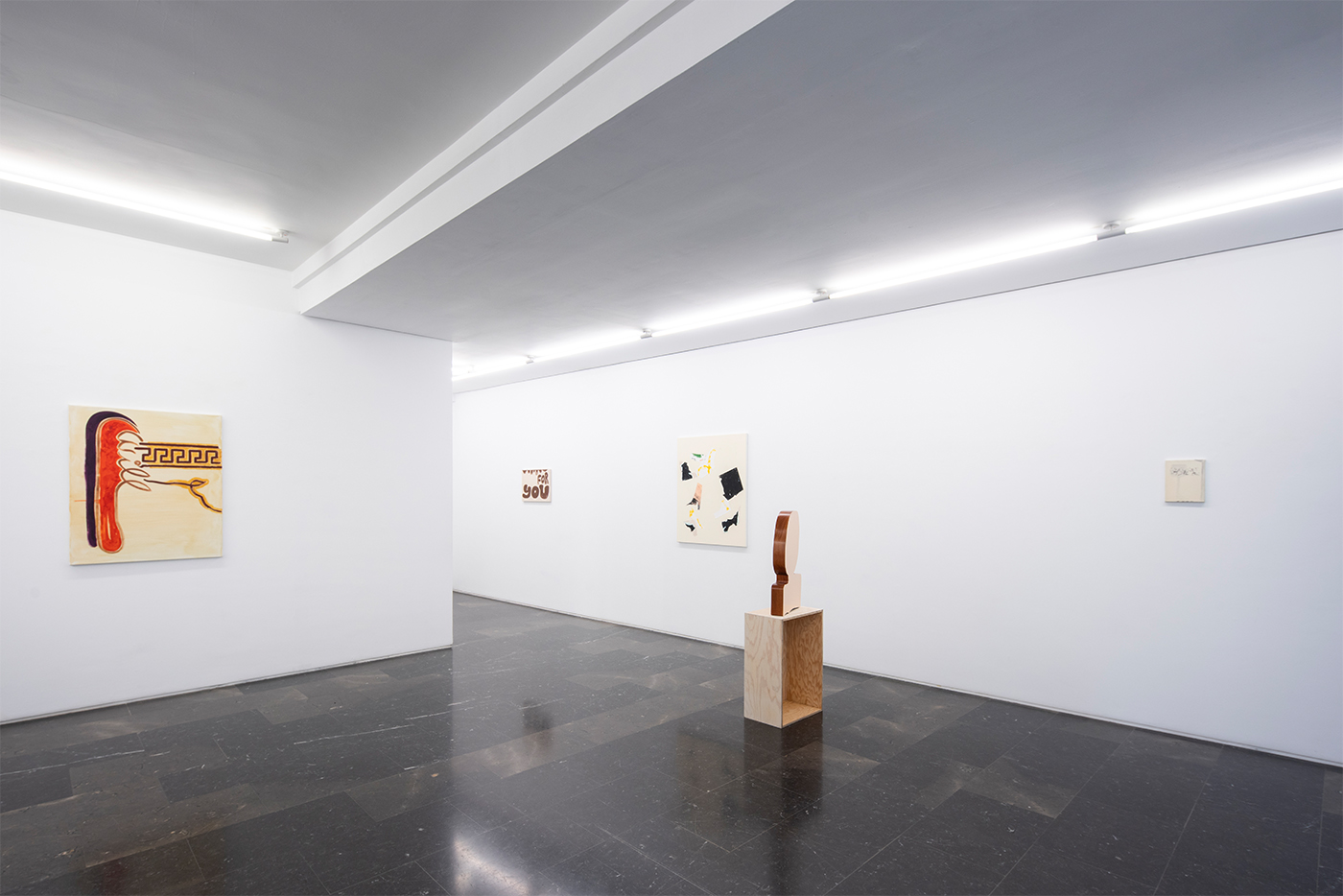
Chocolate fresa vainilla, 2022. Room 3. General view.
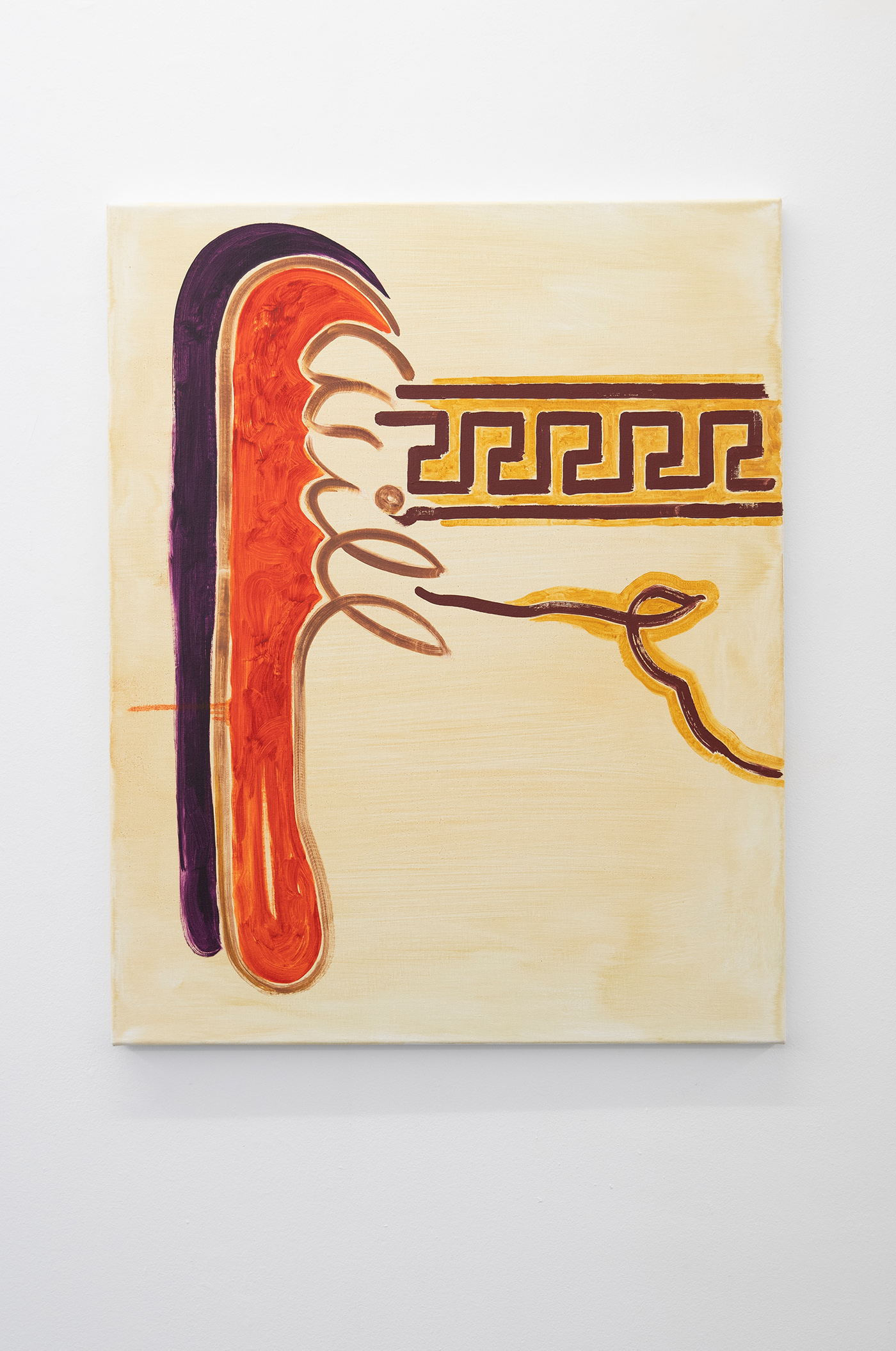
Rasmus Nilausen. Will, 2017. Oil on canvas. 100 x 80 cm.
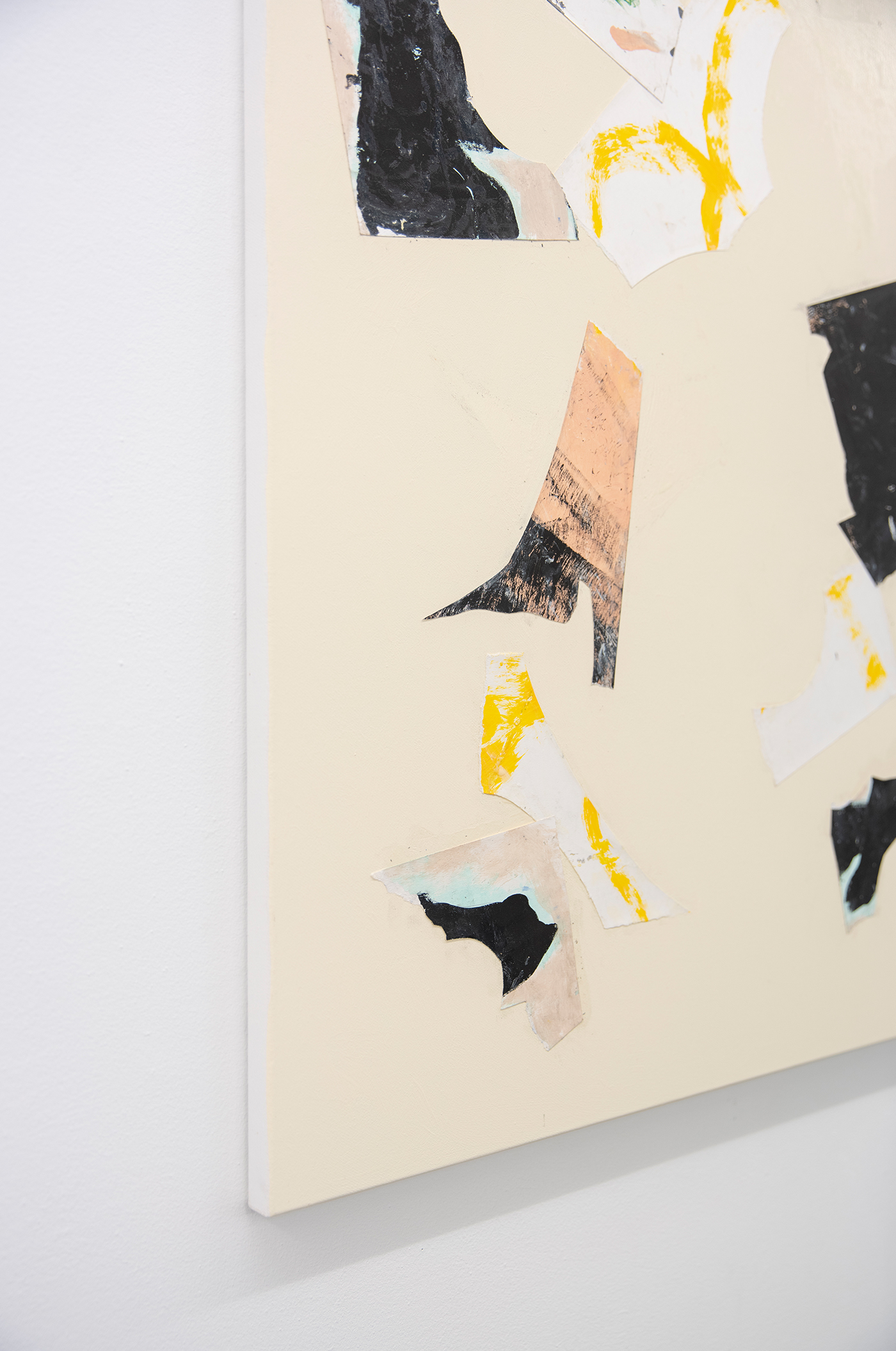
Hugo Pernet. Evidences, 2022. Acrylic and paper on canvas. 100 x 81 cm.
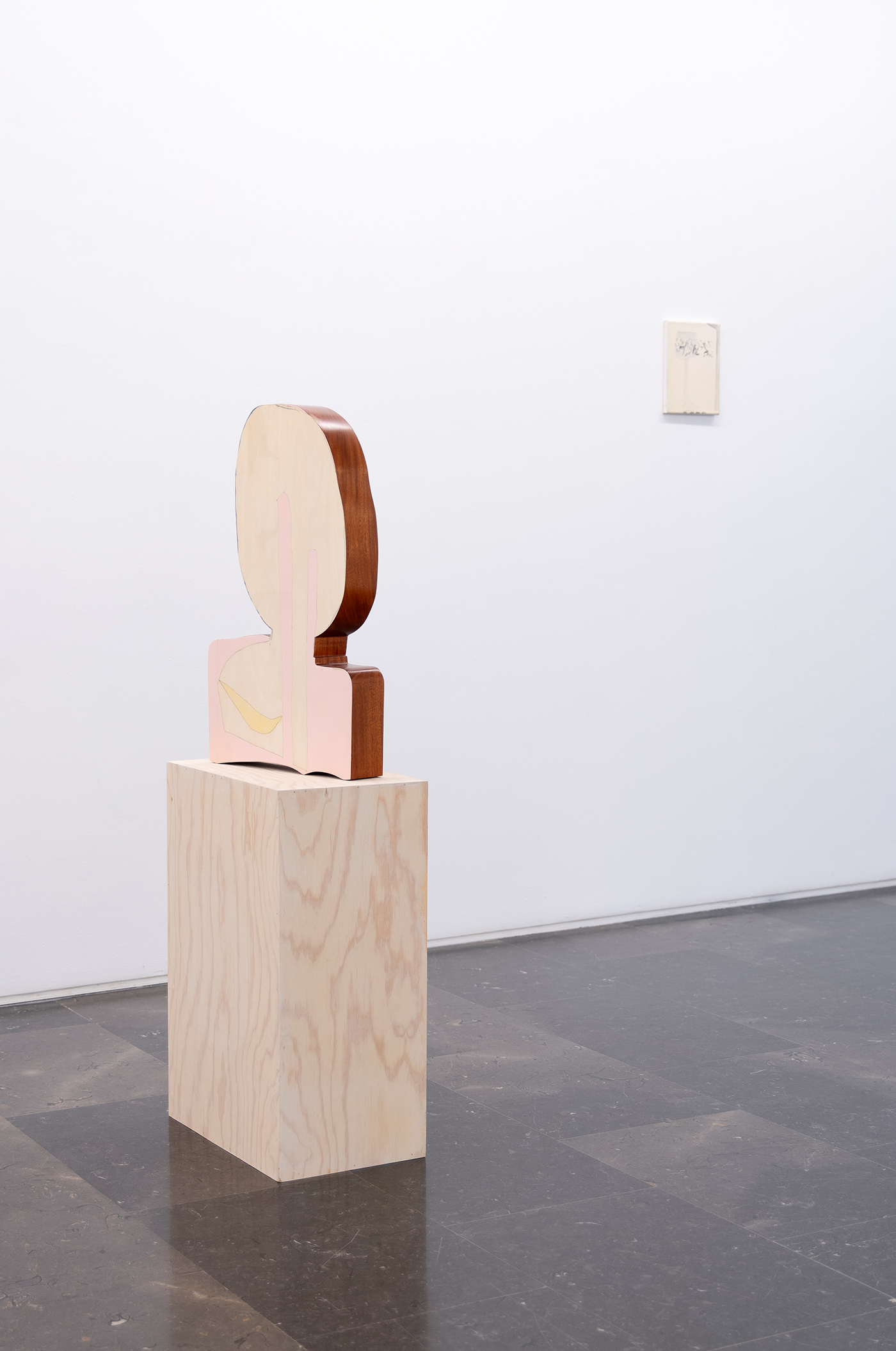
Sara Tritz. Josse, 2017. Laquered mahogany wook. 63 x 36 x 8 cm. / Emmanuelle Castellan. Monkey's cup, 2018. Oil on canvas. 24 x 18 cm.
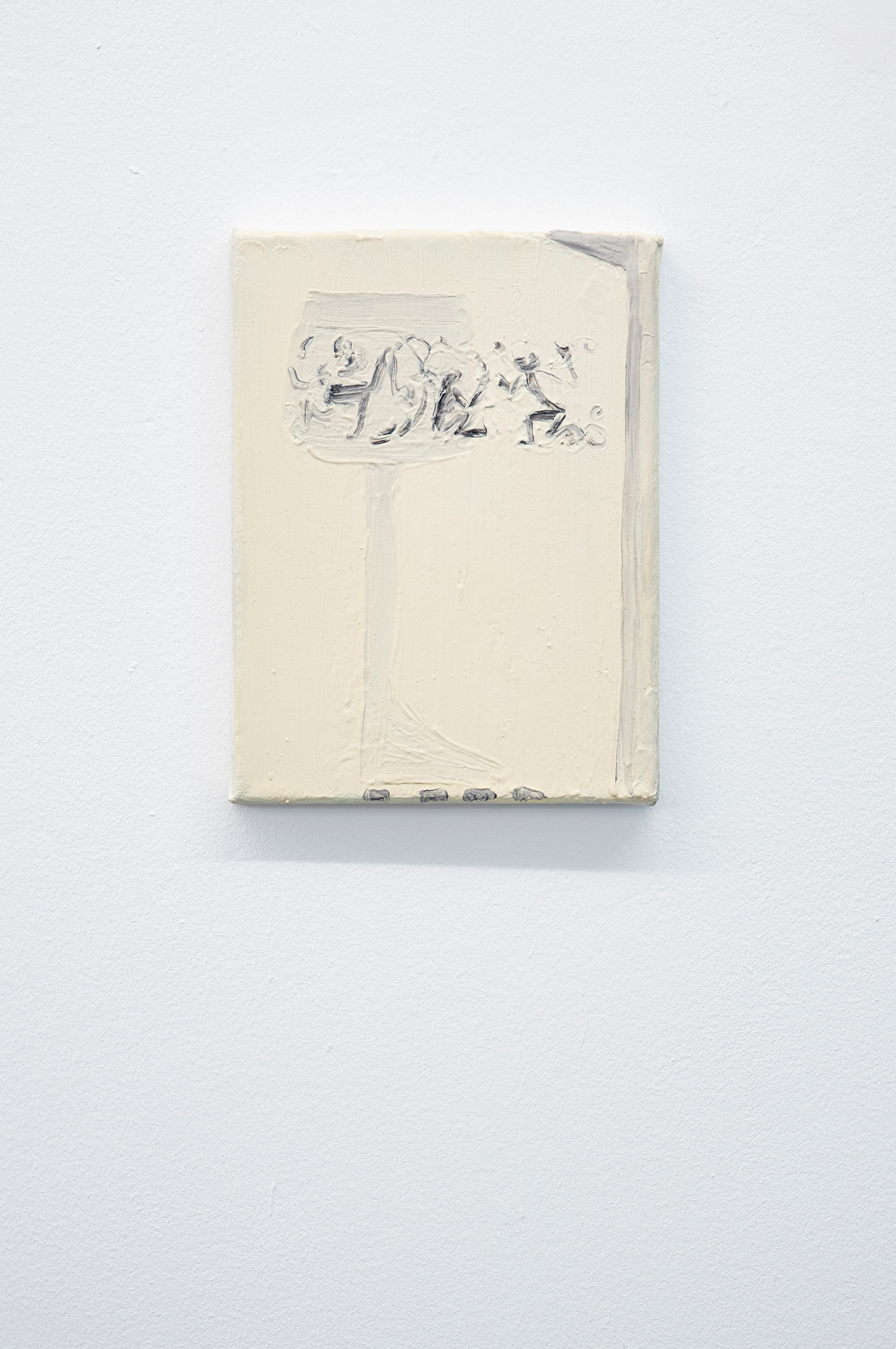
Emmanuelle Castellan. Monkey's cup, 2018. Oil on canvas. 24 x 18 cm.
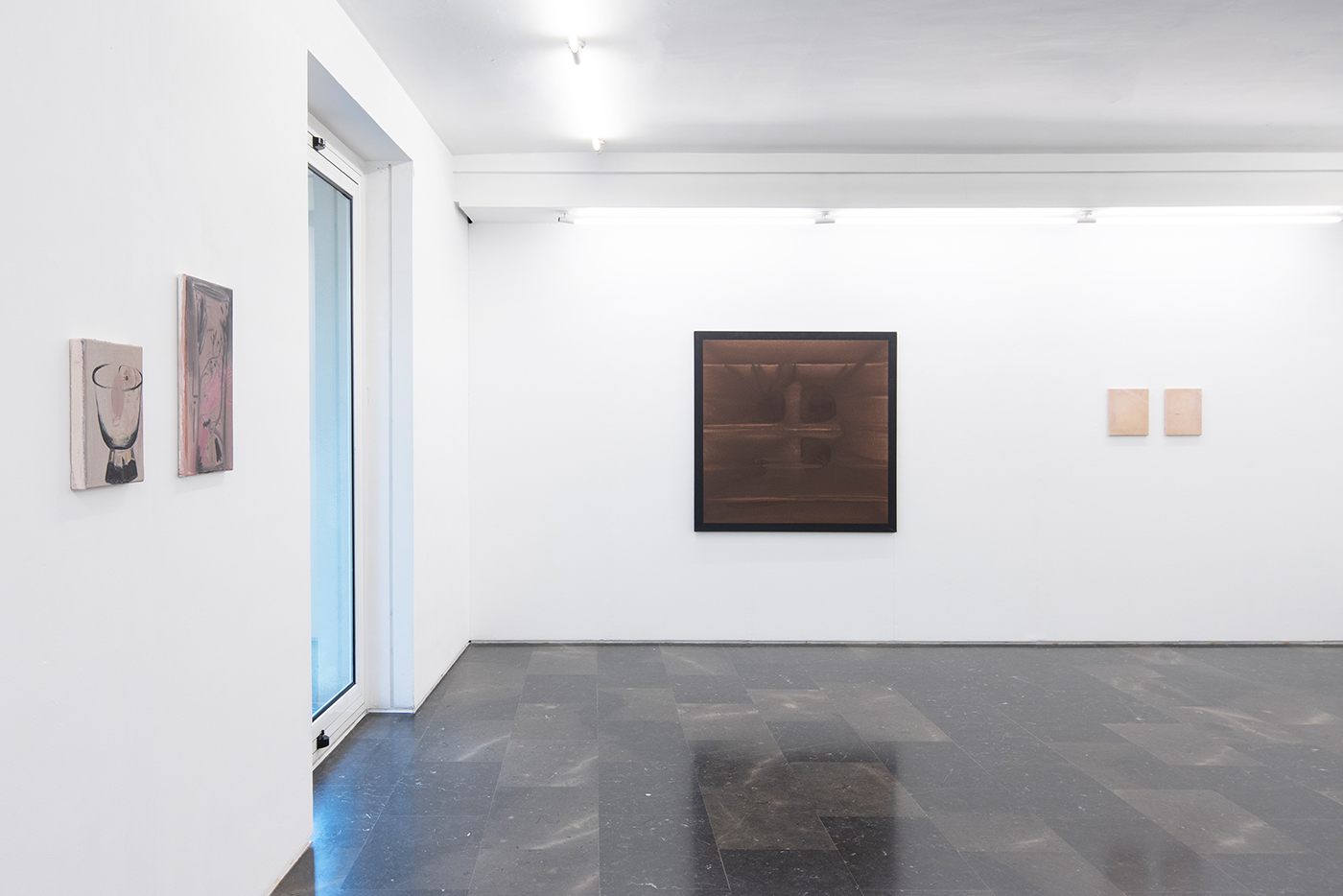
Chocolate fresa vainilla, 2022. Room 3. General view. / Central work, Emmanuel Van Der Meulen. Eïkon, 2017. Acrylic on canvas. 130 x 130 cm.
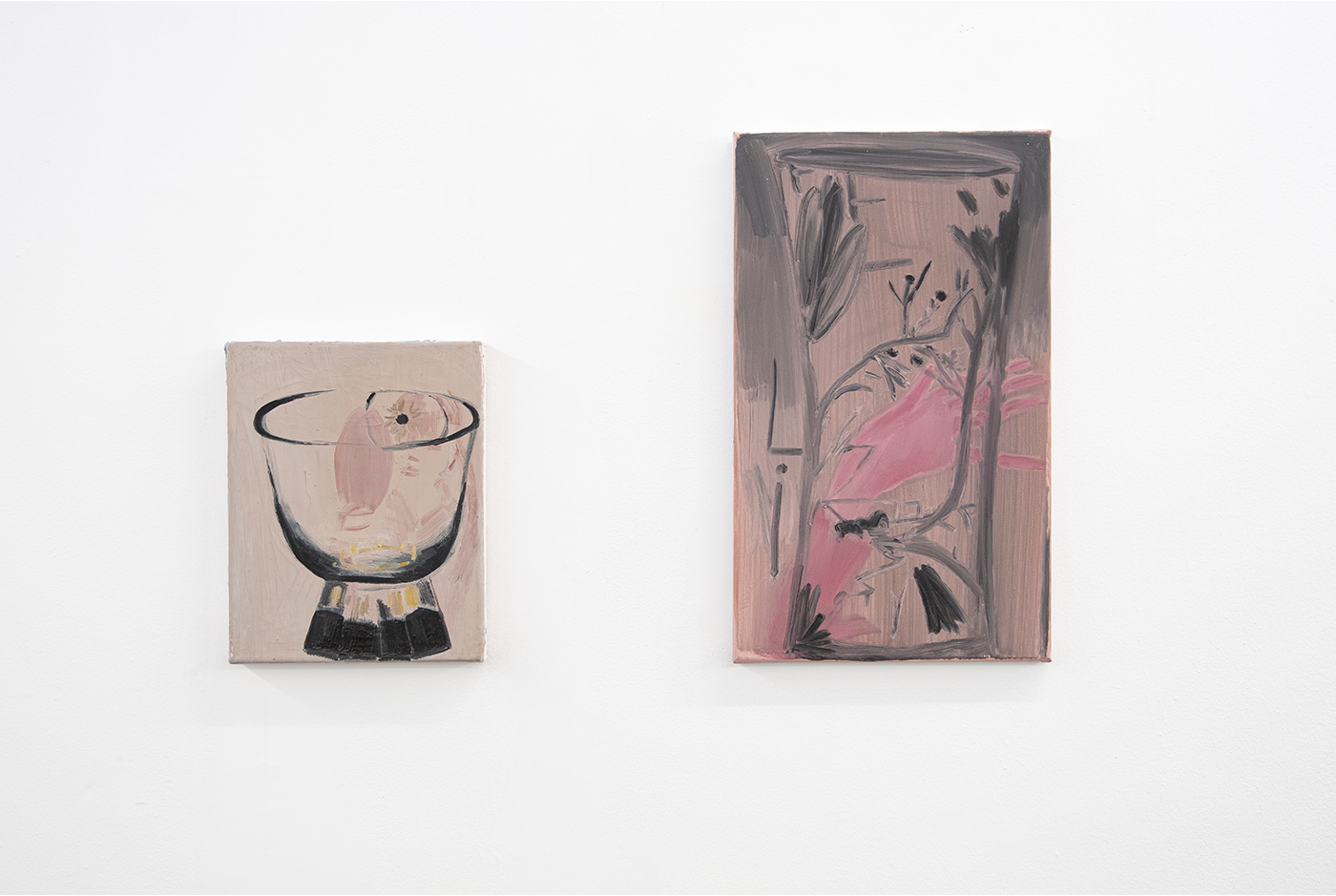
Emmanuelle Castellan. Nothing left to mirror, 2021. Oil on canvas. 30 x 24 cm. / Schwarze Zauber, 2021. Oil on canvas. 50 x 30 cm.
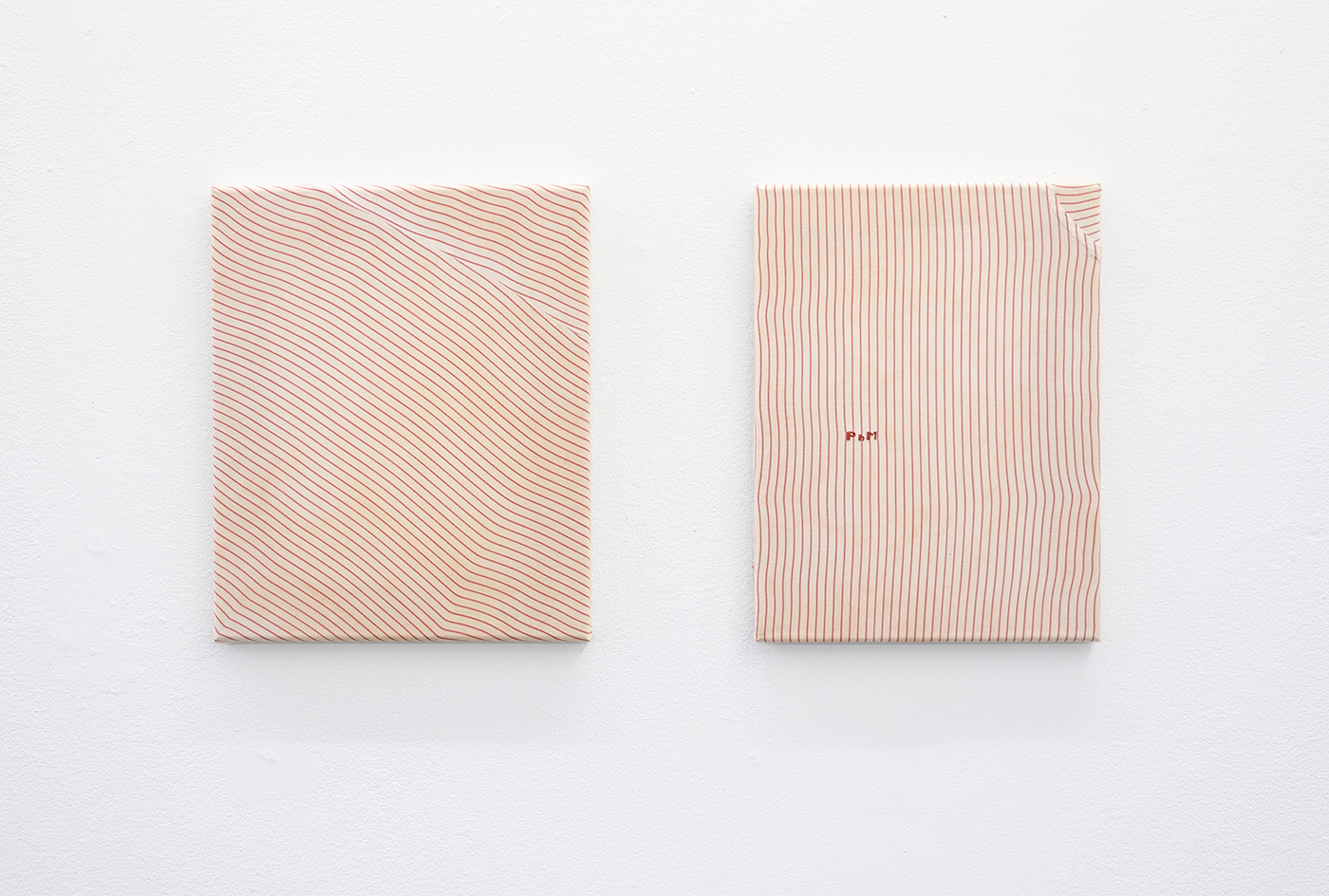
Daniel Graham Loxton. Shirt painting V.1, 2018. Shirt fabric, embroidery and wooden stretcher bars. 30 x 25 cm. / Shirt painting, 2019. Shirt fabric, embroidery and wooden stretcher bars. 30 x 23 cm.

Camila Oliveira Fairclough. For you, 2021. Acrylic on canvas. 38 x 55 cm.
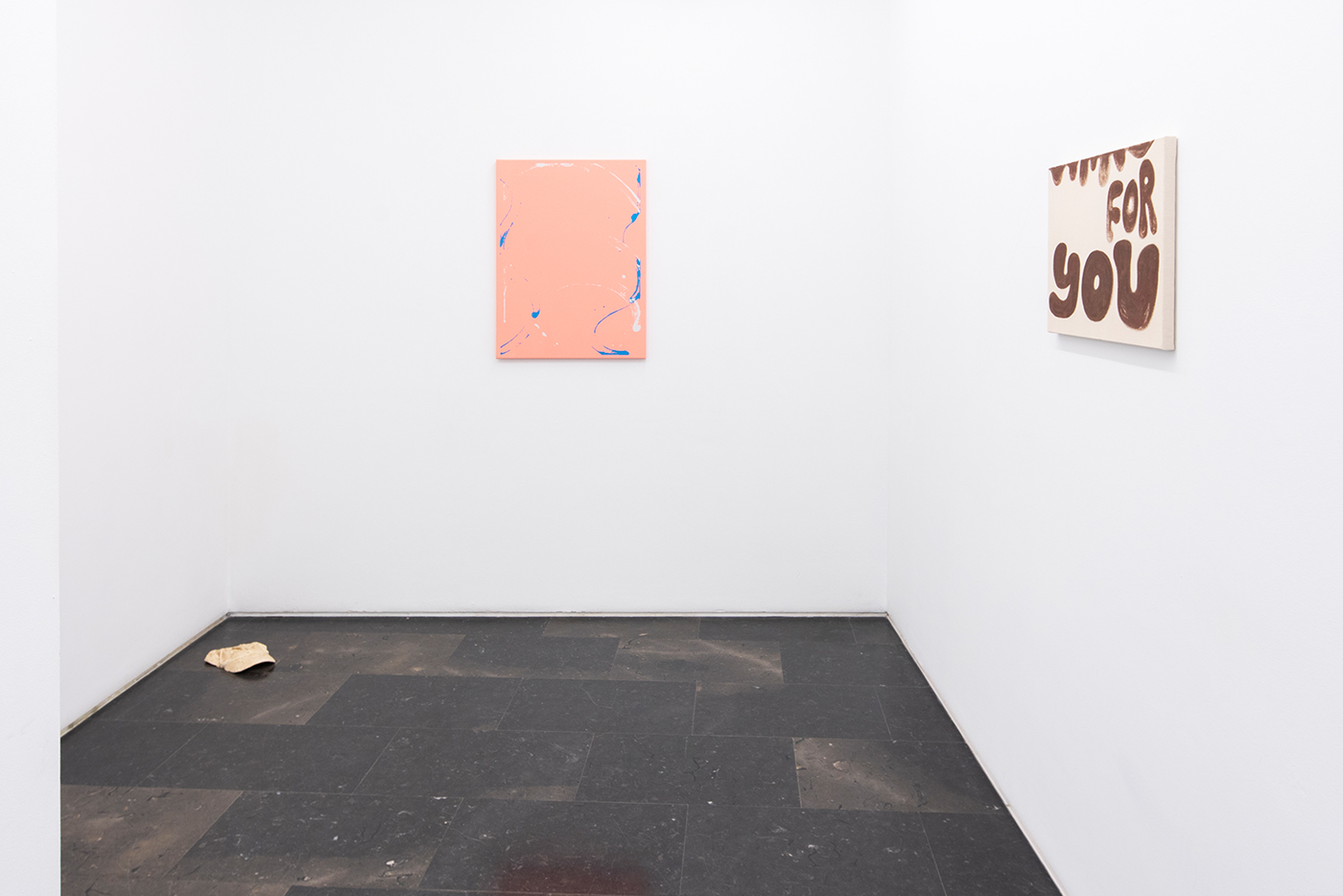
Colombe Marcasiano. Cap (Sandy flat), 2019. Cap, plaster, sand. 20 x 30 x 9 cm. / Oliver Filippi. Rose, 2021. Acrylic on canvas. 60 x 80 cm. / Camila Oliveira Fairclough. For you, 2021. Acrylic on canvas. 38 x 55 cm.
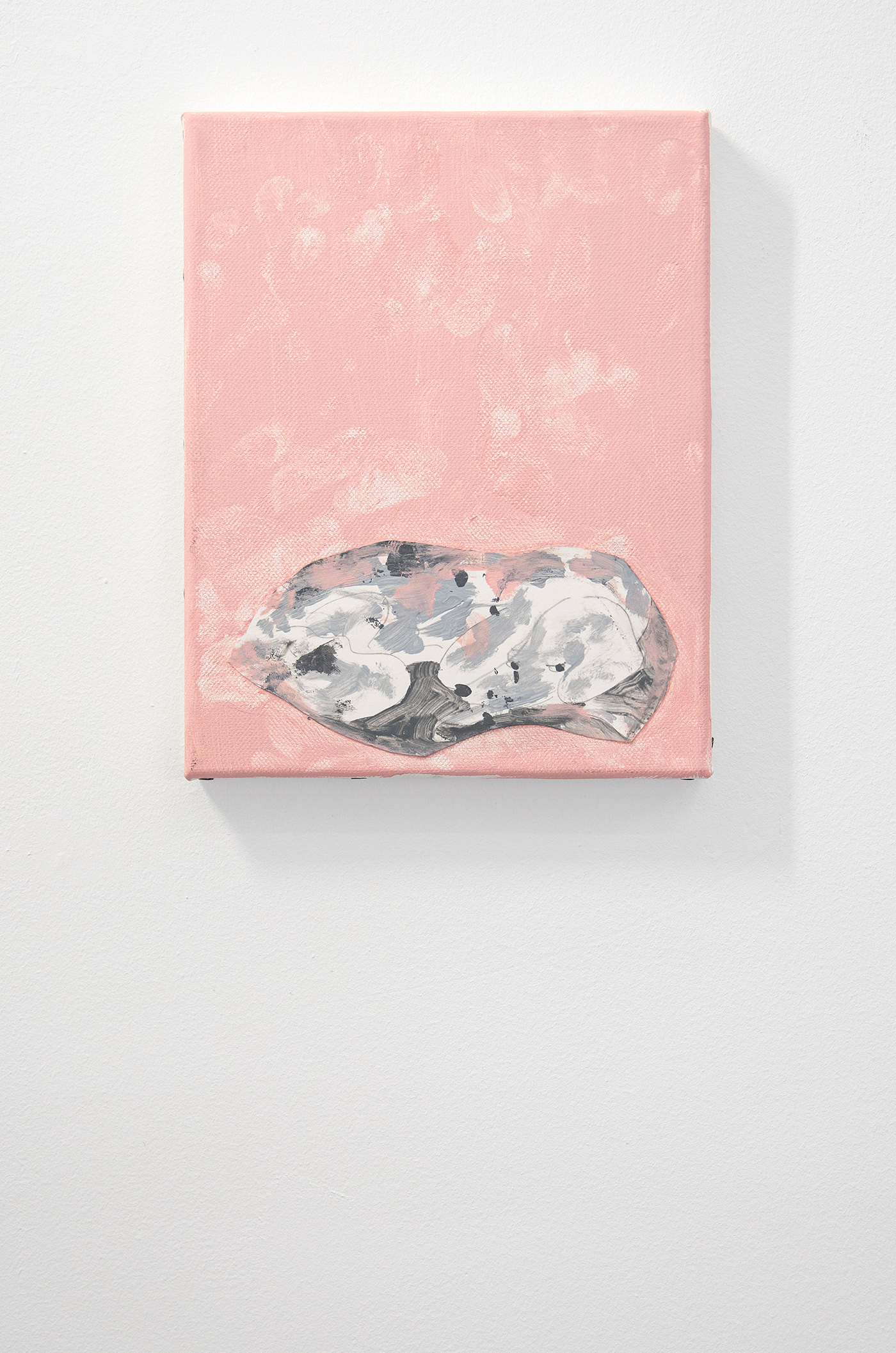
Hugo Pernet. Il cane di Perugino, 2021. Drawing paper and acrylic on canvas. 24 x 19 cm.
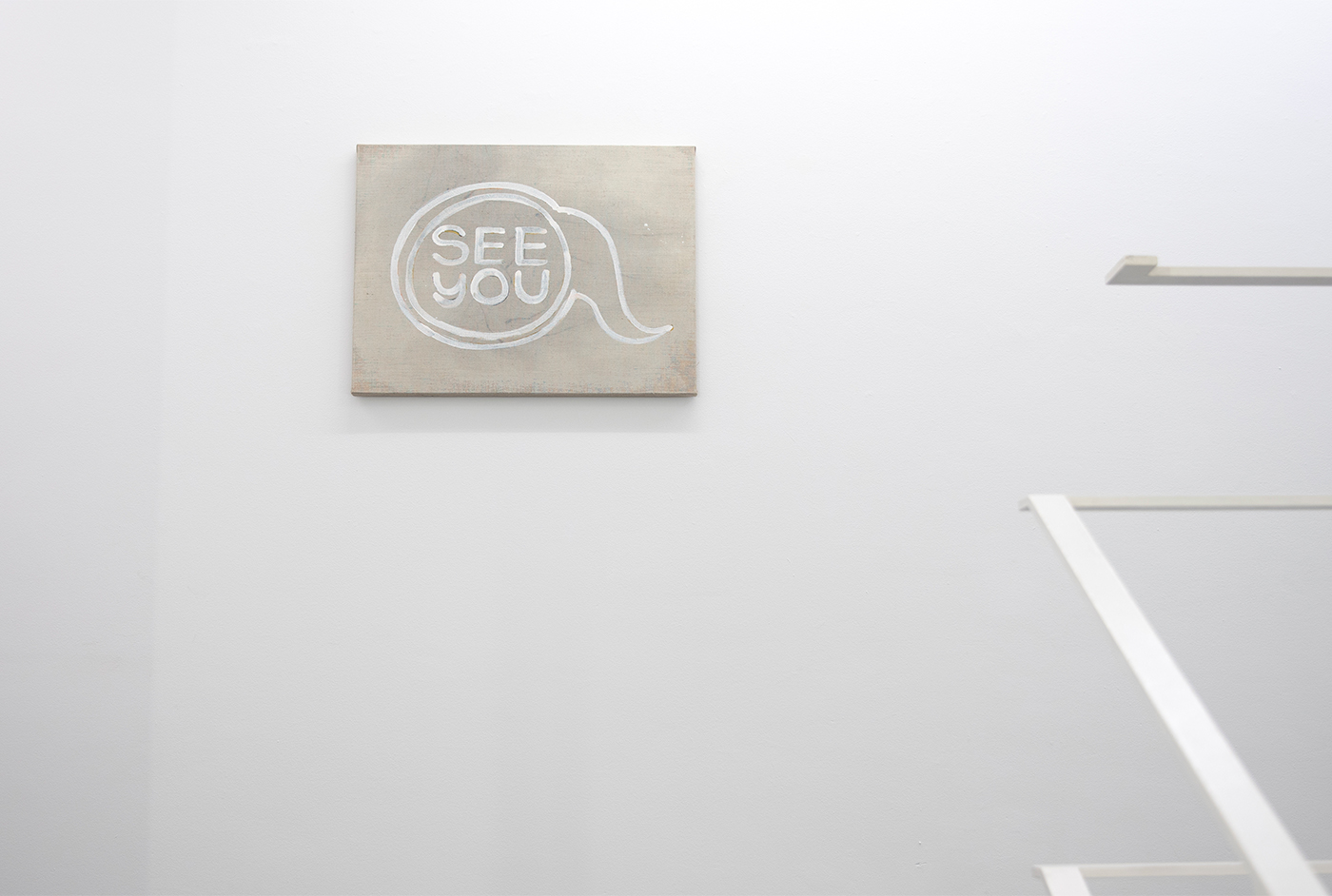
Camila Oliveira Fairclough. See you, 2022. Acrylic on canvas. 50 x 65 cm.
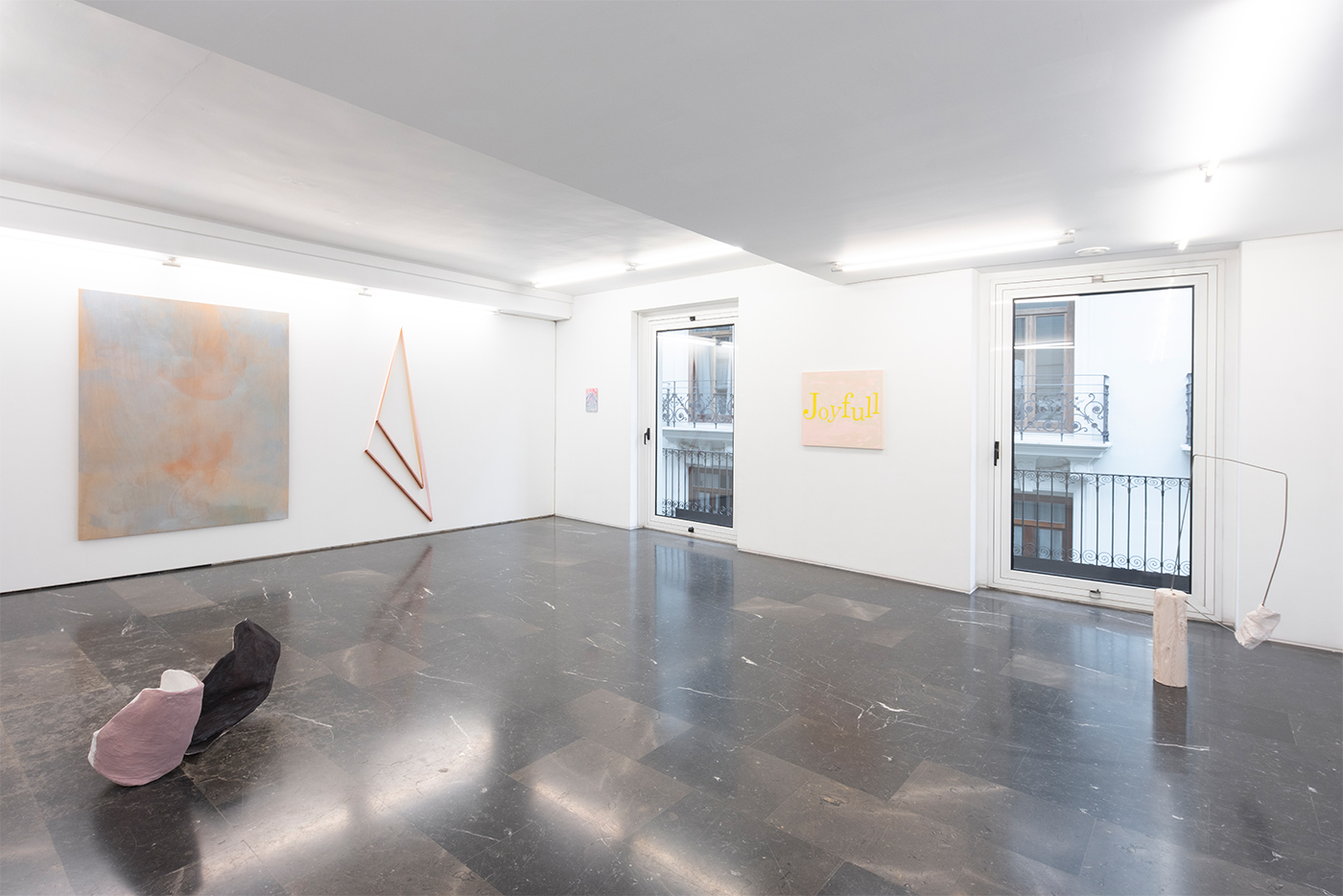
Chocolate fresa vainilla, 2022. Room 4. General view.
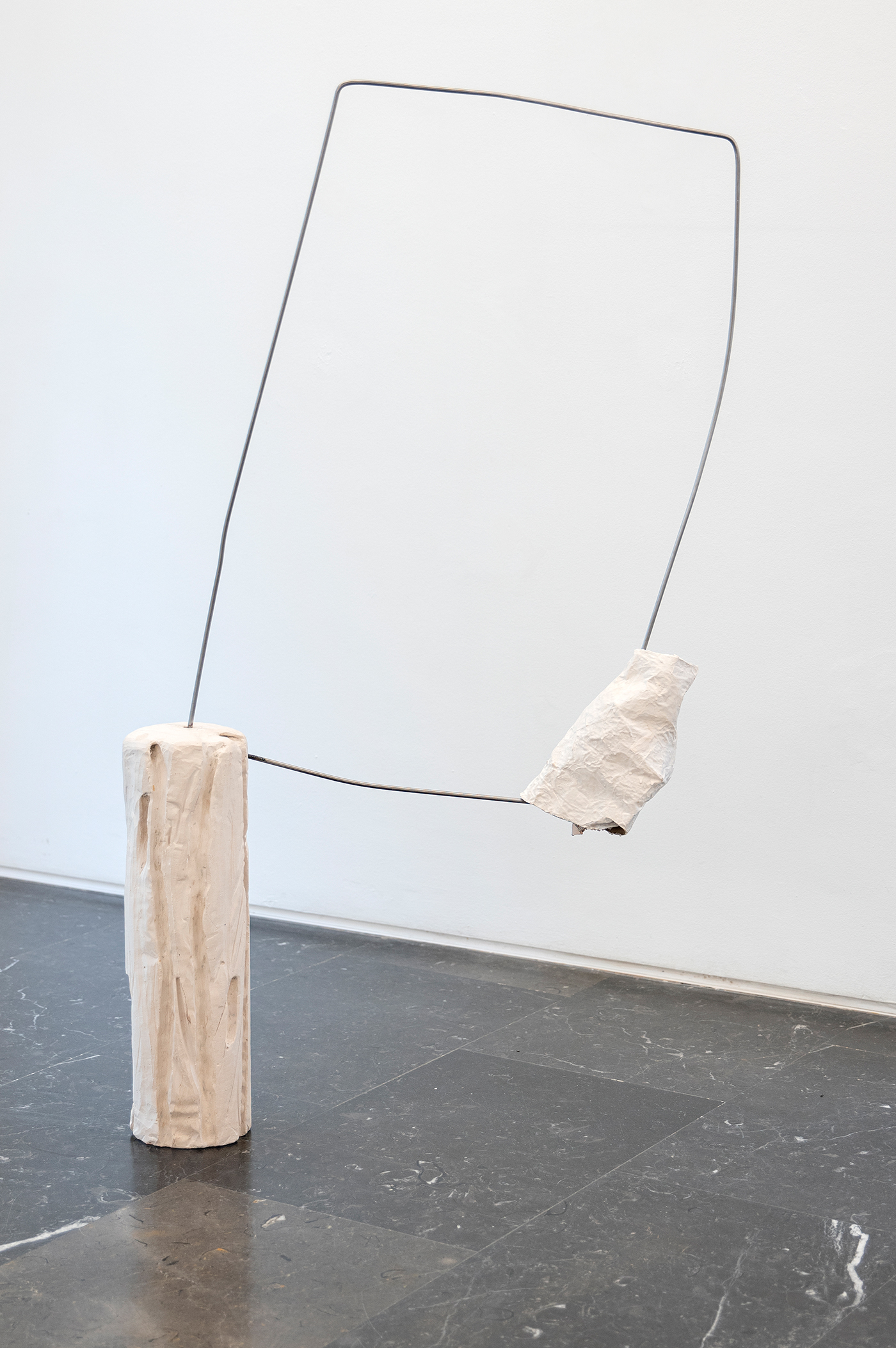
Allison Blumenthal. Tilting frame, 2022. Plaster, steel, paper, resin. 112 x 70 x 24 cm.

Camila Oliveira Fairclough. Joyful / Yellow, 2019. Acrylic on canvas. 70 x 80 cm.
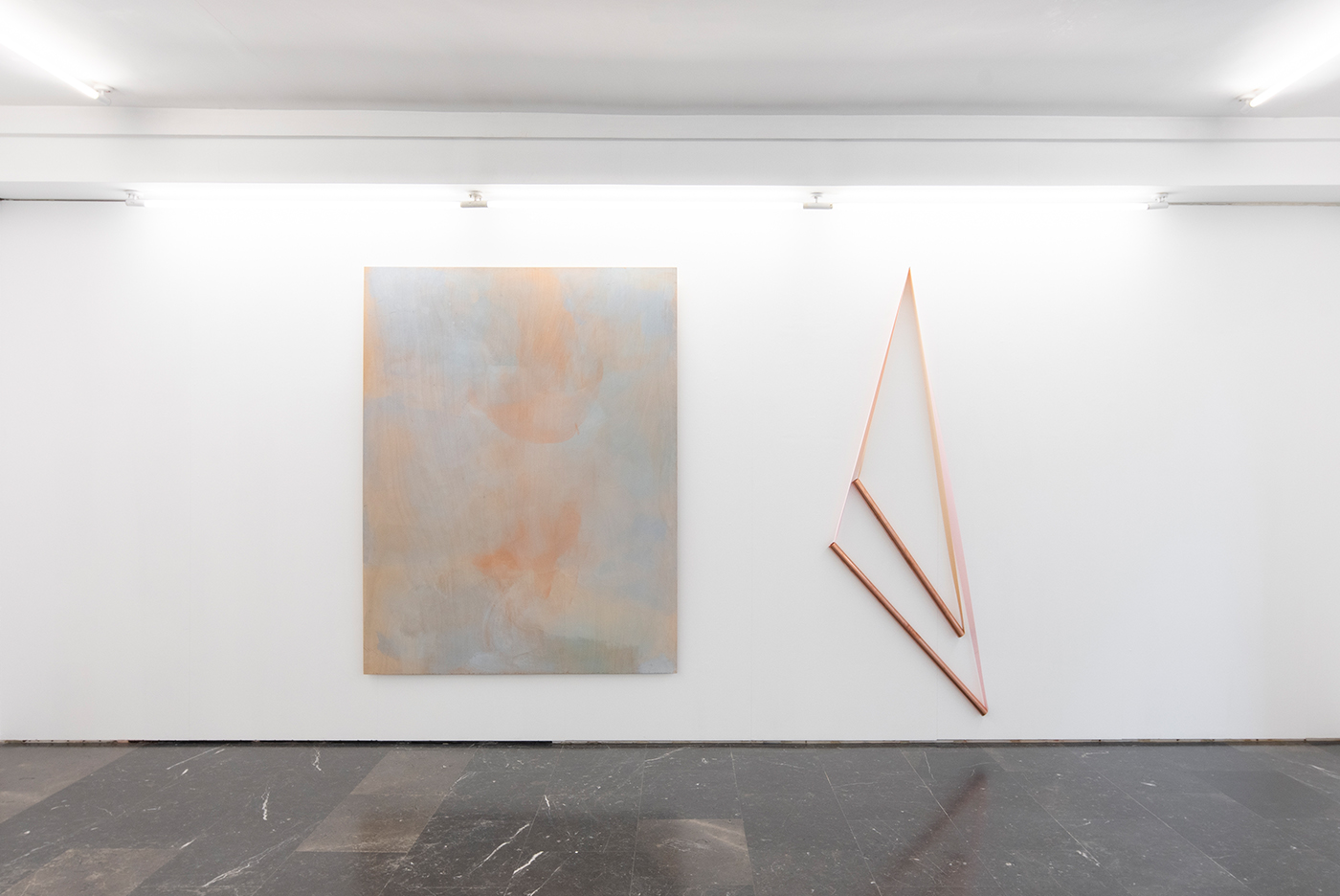
Ane Laure Sacriste. Untitled, 2022. Acrylic on wood panel. 195 x 150 cm. / Ane Laure Sacriste. Gravity, 2022. Riboons, metallic cylinders. Variable measures.
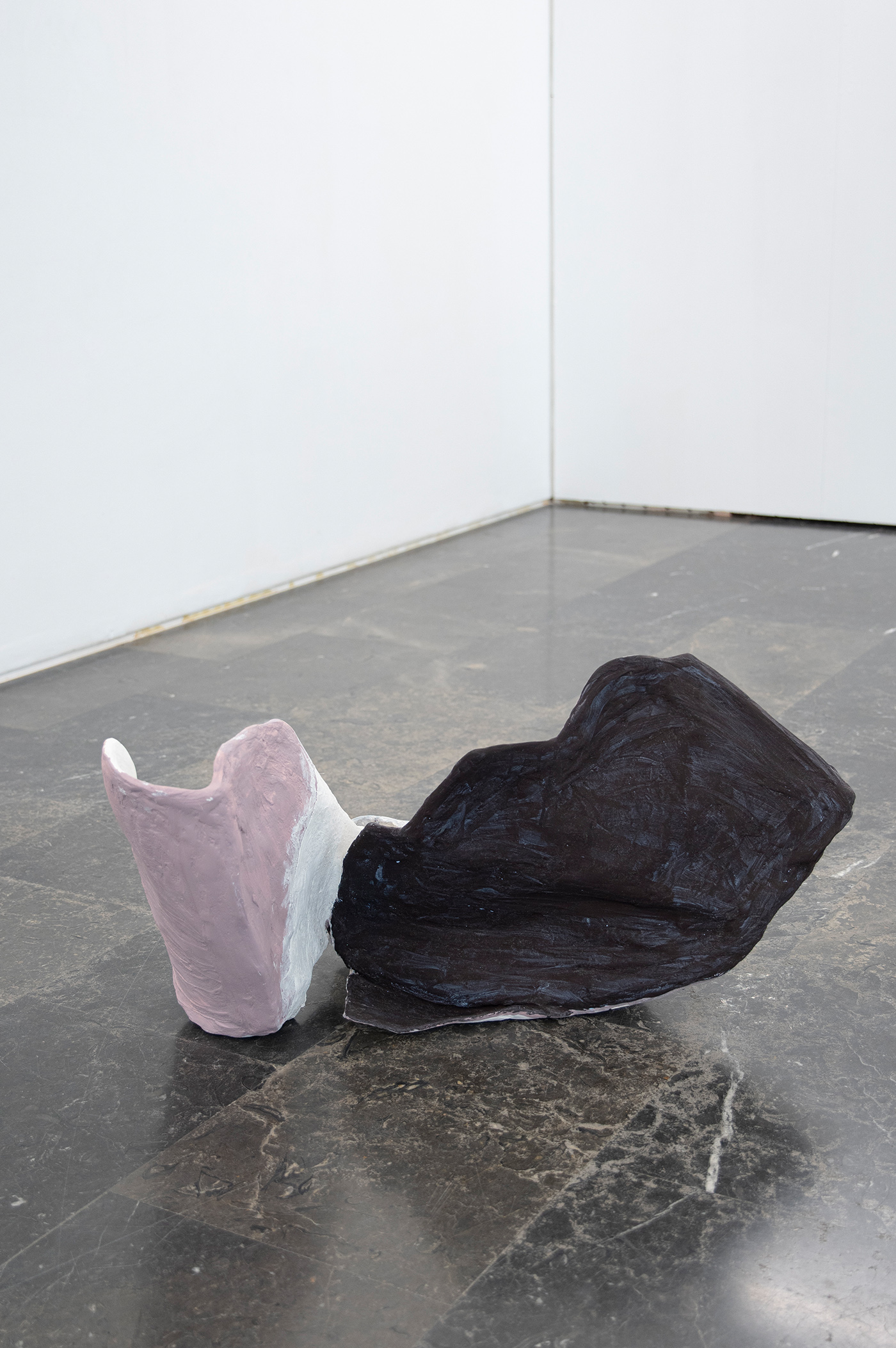
Allison Blumenthal. Double form, 2019. Plaster, wire, acrylic paint. 46 x 92 x 50 cm.
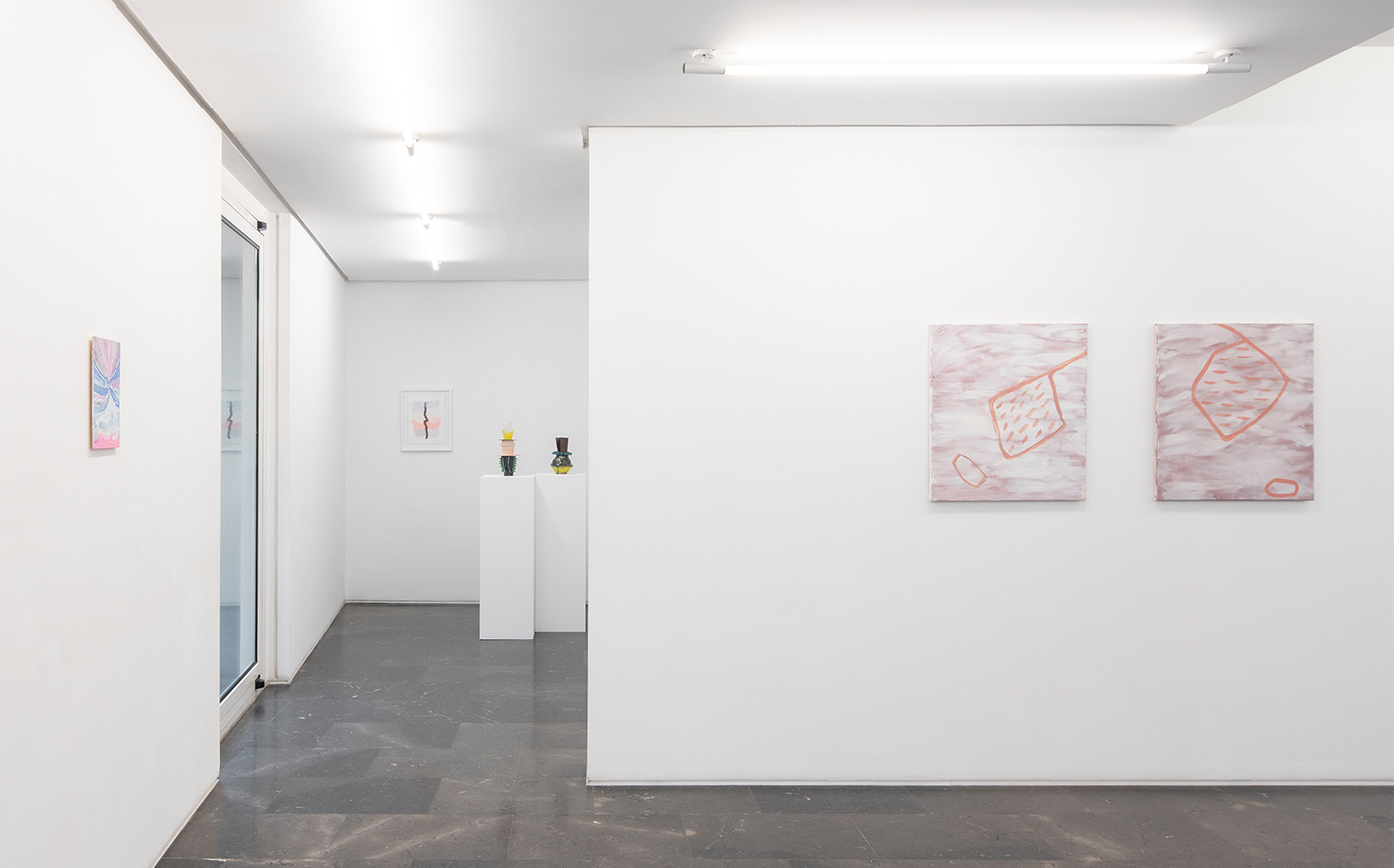
Chocolate fresa vainilla, 2022. Room 4. General view.
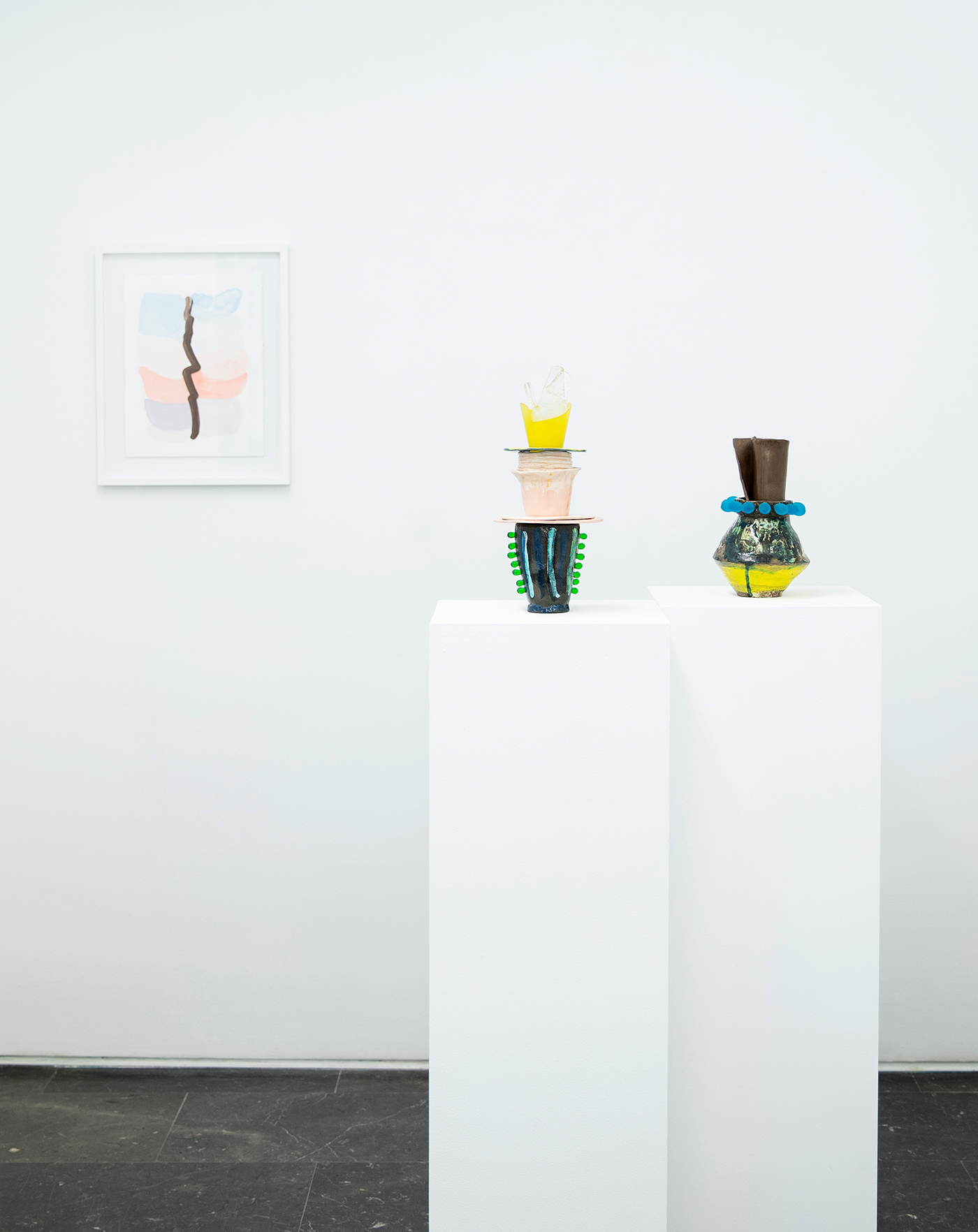
Marielle Paul. Printemps japonais, 2017. Gouache on paper. 38 x 28 cm. / Concha Ibarra. Bombón, 2018. 2 pieces; black clay, yellow enamel, blue glass beads. 27 x 17 x 17 cm. / Concha Ibarra. Sabor a menta, 2018. 8 pieces; black clay, engobes, oxides, glazes, green glass beads. 38,5 x 17 x 16,5 cm.
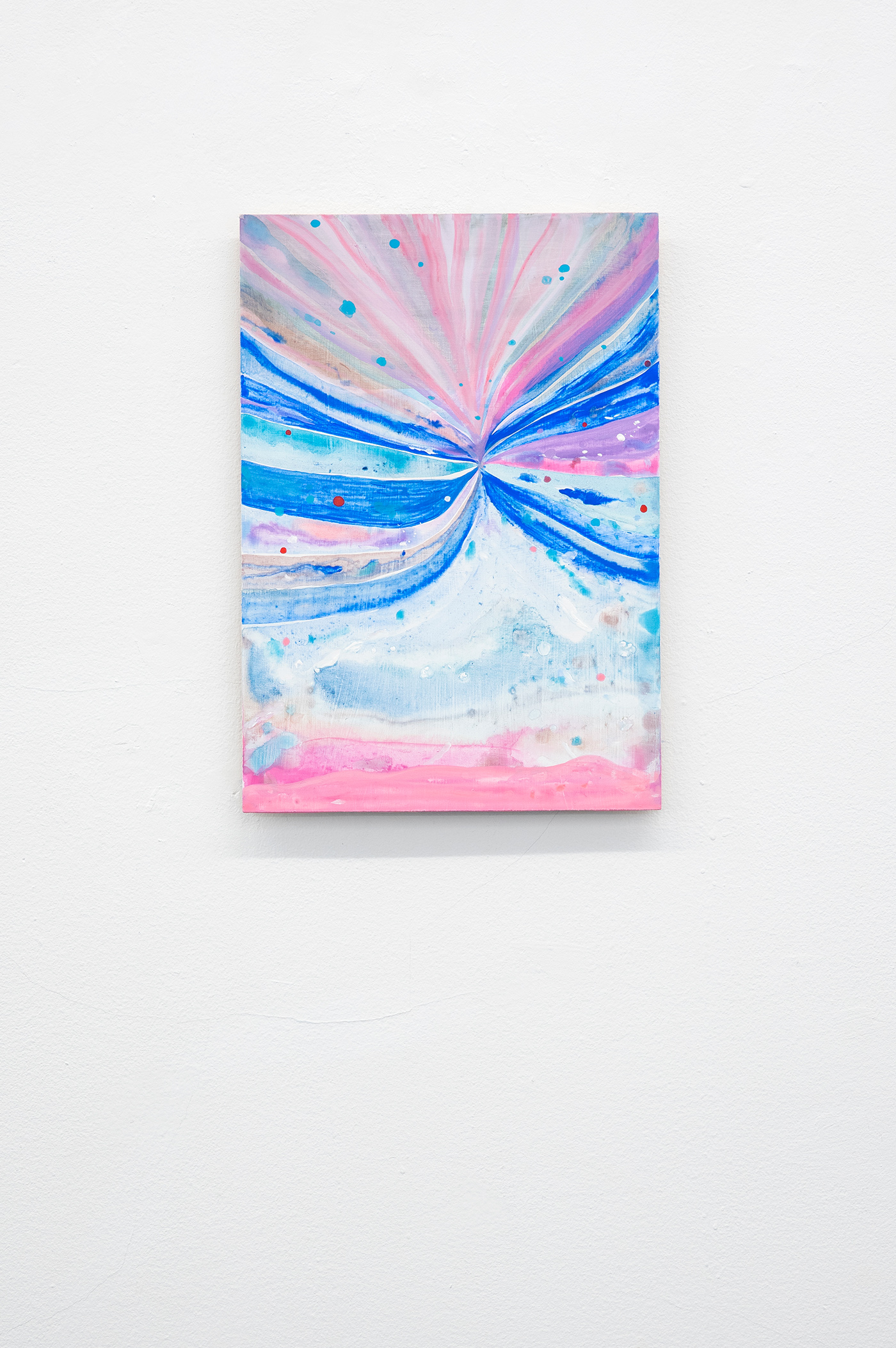
Anne Colomes. Fireworks, 2022. Gouache on wood. 29,7 x 21 cm.
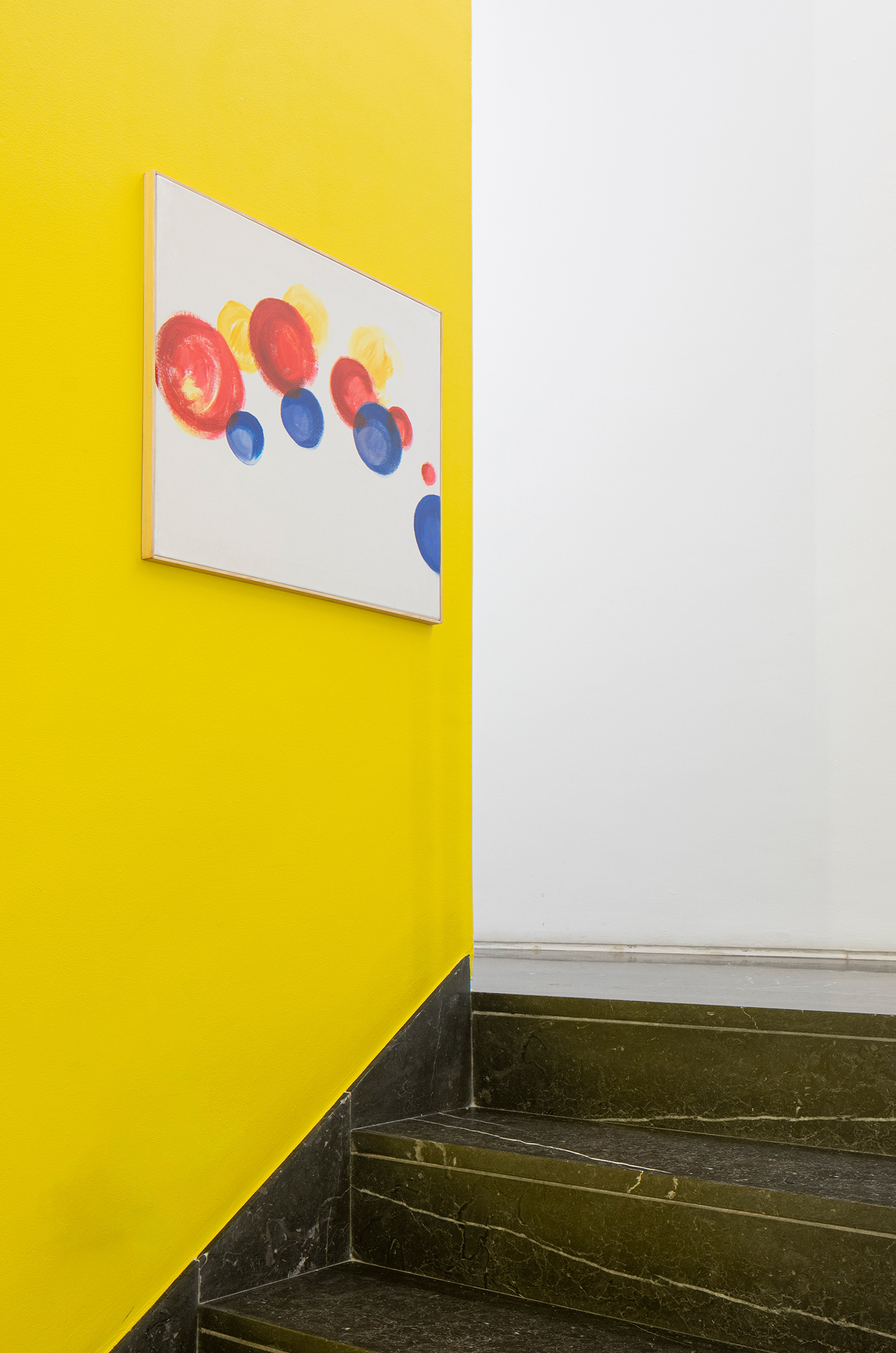
Simon Rayssac Colomes. Il faudra un jour savoir se dire au revoir / To learn how to say goodbye, 2022. Acrylic on canvas. 46 x 55 cm.
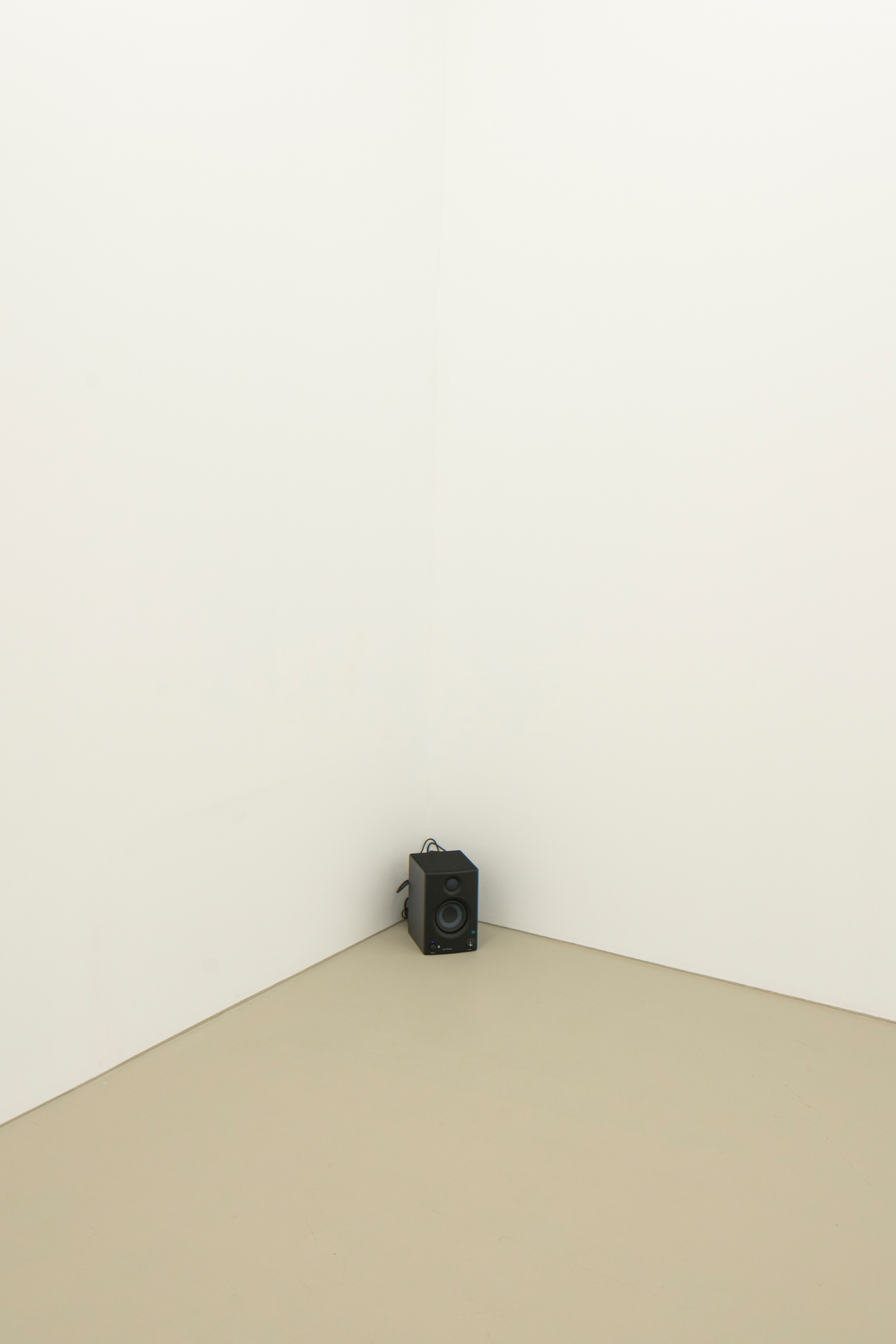
Claude Closky. I like this, 2021. Sound installation. 3m 15s
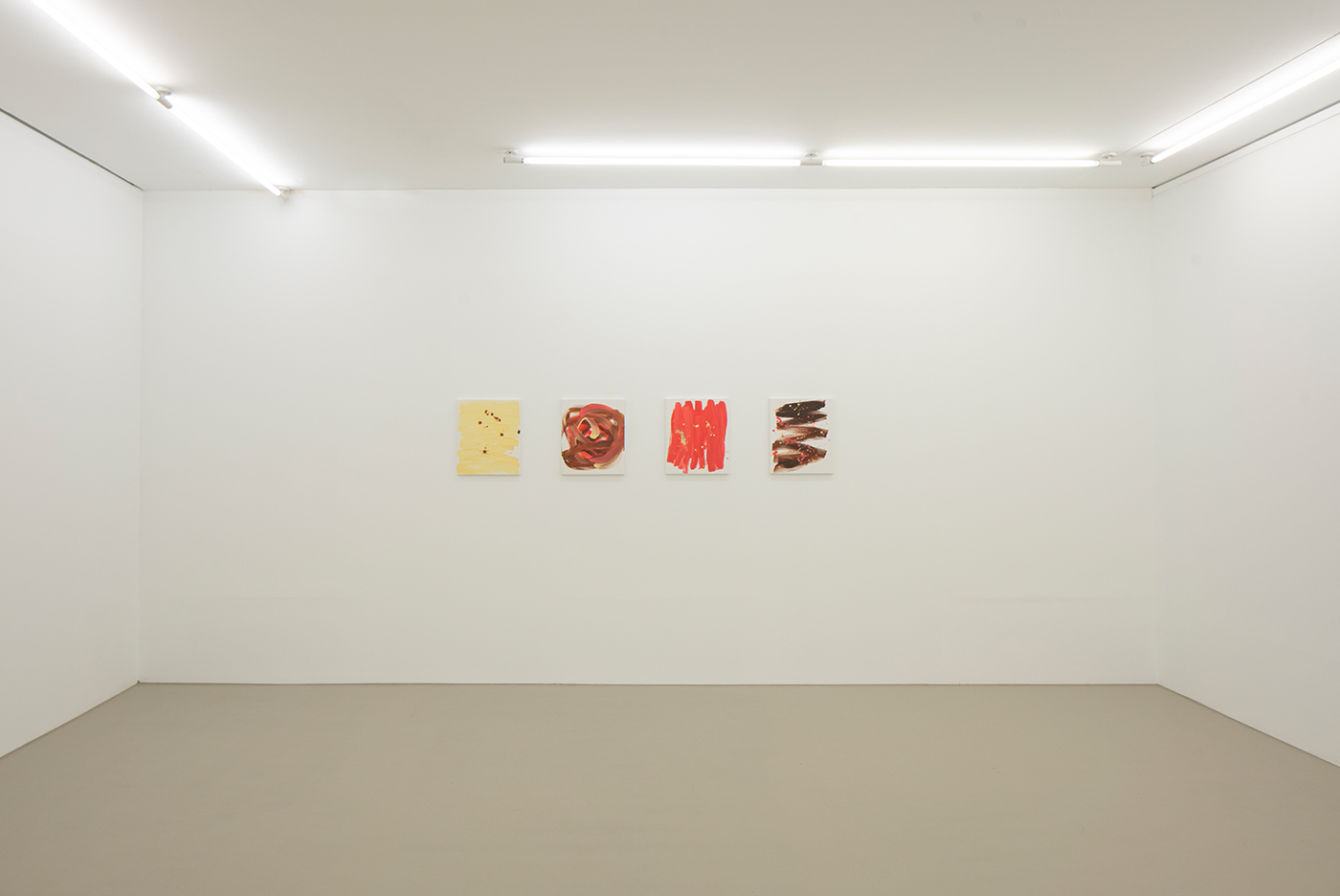
Camila Oliveira Fairclough. Vainille, chocolat, 2022. Acrylic on canvas. 45 x 37 cm. / Fraise, vainille, chocolat, 2022. Acrylic on canvas. 45 x 37 cm. / Fraise, vainille, 2022. Acrylic on canvas. 45 x 37 cm. / Chocolat, fraise, vainille, 2022. Acrylic on canvas. 45 x 37 cm.
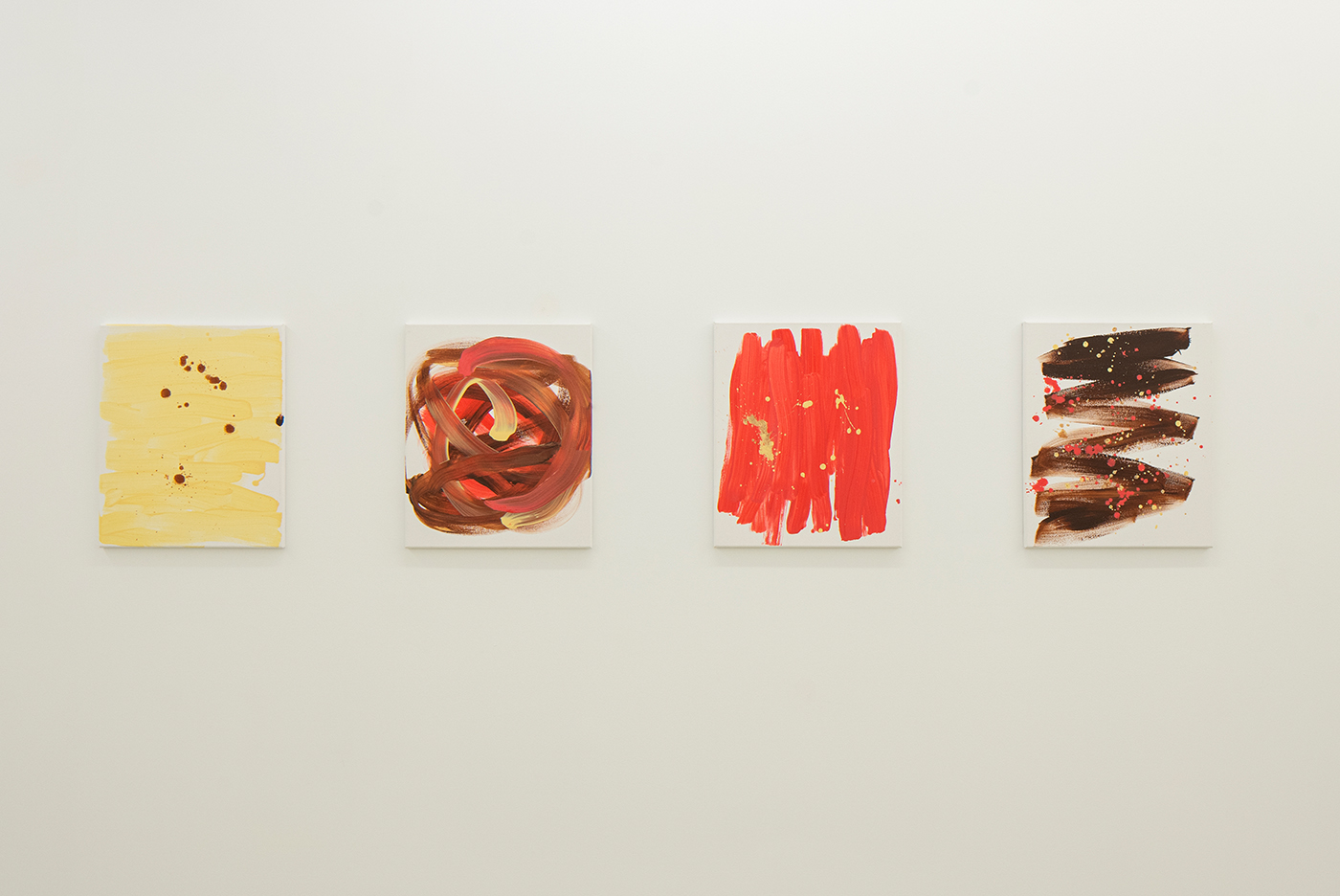
Camila Oliveira Fairclough. Vainille, chocolat, 2022. Acrylic on canvas. 45 x 37 cm. / Fraise, vainille, chocolat, 2022. Acrylic on canvas. 45 x 37 cm. / Fraise, vainille, 2022. Acrylic on canvas. 45 x 37 cm. / Chocolat, fraise, vainille, 2022. Acrylic on canvas. 45 x 37 cm.
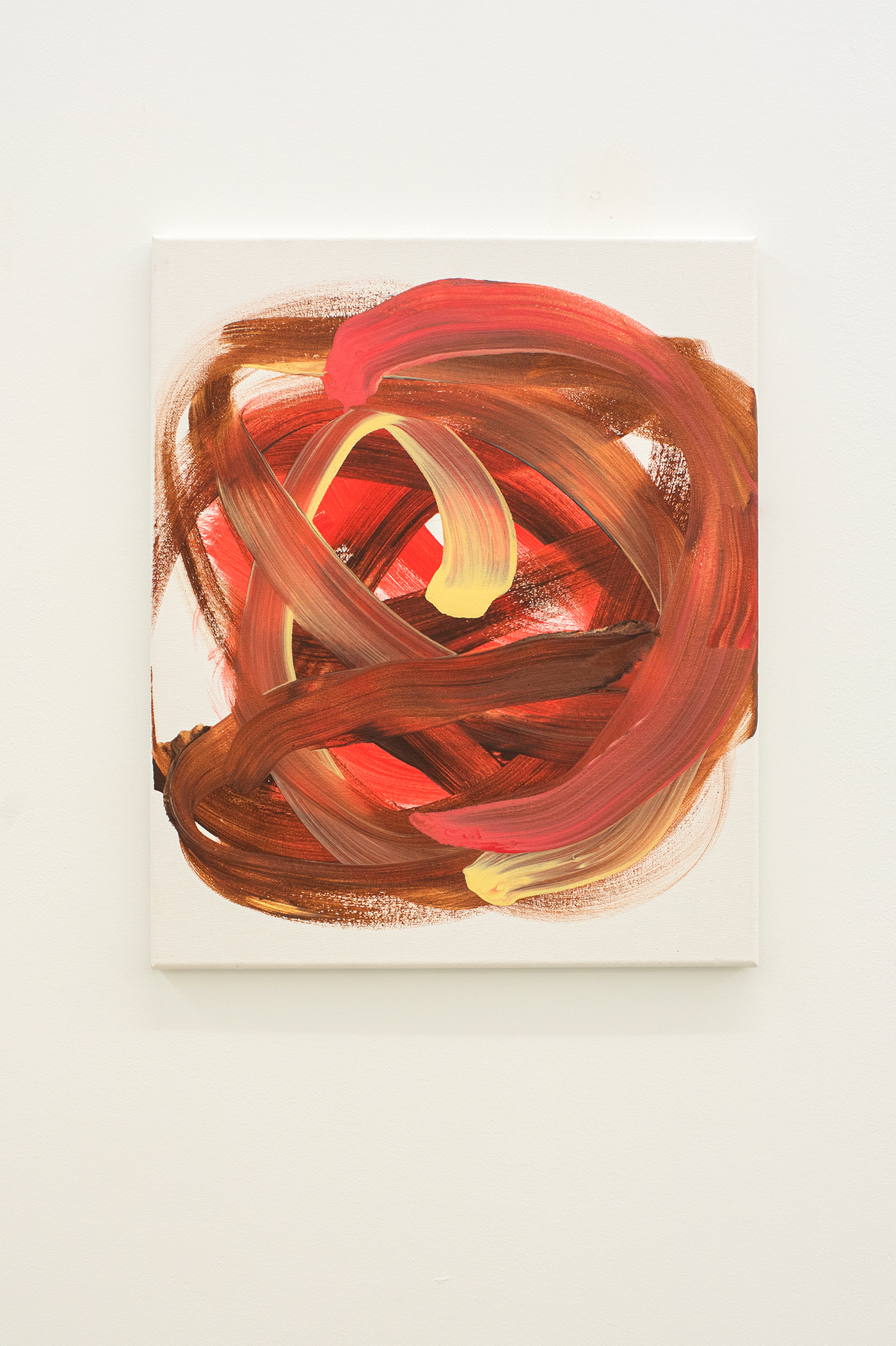
Camila Oliveira Fairclough. Fraise, vainille, chocolat, 2022. Acrylic on canvas. 45 x 37 cm.
Press release
Chocolate, strawberry, vanilla.
Let these three words resonate in your ears. Chocolate, strawberry, vanilla. Let all the associations come to the surface. Childhood memories, summers by the sea, gelati, always creamy, the whole range of refreshments, and the skin that shivers when the temperature drops. La dolce vita. White, pink, and light brown make up the flag of an imaginary country, very sweet. At the opposite end of the spectrum, there is also something a little perverse, which pretends to be pretty but belongs, when you think about it, to the realm of the scatological-organic-hormonal. The holy trilogy of urine, blood and shit. The one of ketchup, mayonnaise and barbecue sauce for those who prefer red meat to sweets. The English philosopher Timothy Morton also sees in these three flavors complementary energies, based on the Buddhist emotional typology: “agression [chocolate], passion [strawberry], and ignorance [vanilla]”. And if we take a mental step in the direction of art history, they will constitute a sugary gourmand version of the colors of predilection used by Malevich and the Suprematists in their paintings: white, red, black.
How do you put together a group exhibition? What criteria should be used to gather the works? Is it necessary to define a theme? Should we follow a protocol? Launch a call for contributions? Stick to one definite spatial principle?
Camila Oliveira Fairclough, who is a painter before being a curator, has answered these questions with a proposal in the form of a pop fantasy, a trilogy of flavors. She is quite clearly in line with the legacy of exhibition authors such as the American Bob Nickas. The latter, who has never been afraid of being sued for arbitrariness or deadpan humor, has signed exhibitions that have become famous, such as Red in 1986 (only red works), C and W (exhibitions in which all the artists’ names began respectively with these two letters) or 69/96 in 2015 (I’ll let you guess the concept). But as always, the arbitrariness is not so much arbitrary in the end. Firstly, because it is a vision of the exterior architecture of the gallery with its “three floors in the shape of a Neapolitan pie” that initially inspired the artist. Secondly, because Camila Oliveira Fairclough took in the past years an undeniable interest in what she calls the “dirty monochrome”, a painting whose color is plain but textured, damaged, marked, altered. This is the case of certain works by the artist herself, but also by Robbin Heyker, Oriane Déchery or Daniel Graham Loxton, to name only a few. And so, she got interested in this very idea of working curatorially after colors. Finally, because the physical, sensual approach to painting that she explores in her own practice led her quite logically to investigate the “taste” of works on the scale of the exhibition, hence transformed into a gourmet experience. Beyond the binary system (good/bad), we are thus invited to consider a whole palette of plastic identities and personalities, works that are too acidic, sweet, creamy, cheesy, spicy, bitter, hot, cold. Perhaps disgusting too. Or ripe for drooling.
In a more prosaic way, this trio of flavors anchored in the bubblegum pop imagination constitutes a form that allows Camila Oliveira Fairclough to bring together in the exhibition artists belonging to different, even very distant generations, geographies and traditions, moving easily between the radical practice of Support-Surface painting and works that celebrate the decorative, as it navigates between the Sao Paulo-Rio and Paris scenes, via New York and many other places (Proposal for an alternative title: Tutti-Frutti). Simply put, chocolate , vanilla, and strawberry trio work here as a tool. And thanks to it, this show turns into a beautiful demonstration of curatorial freedom. The works are not hung according to a strict chromatic principle (one floor=one color). Some of them, bi- or multicolored like the sculptures of Colombe Marcasiano or Sarah Tritz, clearly escape classification.
It would be difficult (and a little boring) to list here all the artists present in the exhibition. Suffice it to say that Camila Oliveira Fairclough worked according to a logic of affinities, both visual and personal. Many of the artists featured here know each other and have collaborated before. The image formed by the coming together of their works, and their names, is that of a group of friends, a family who live scattered across the globe but meet up regularly.
‘I Like This’ (2021), the sound work by Claude Closky that constitutes the cherry on top of this three-flavored cake points somehow to the technical underside of this reality. A perfect conclusion, it shows that works may be discovered online, and that friendships and love may be kept active and alive, even at a distance.
_ Jill Gasparina

